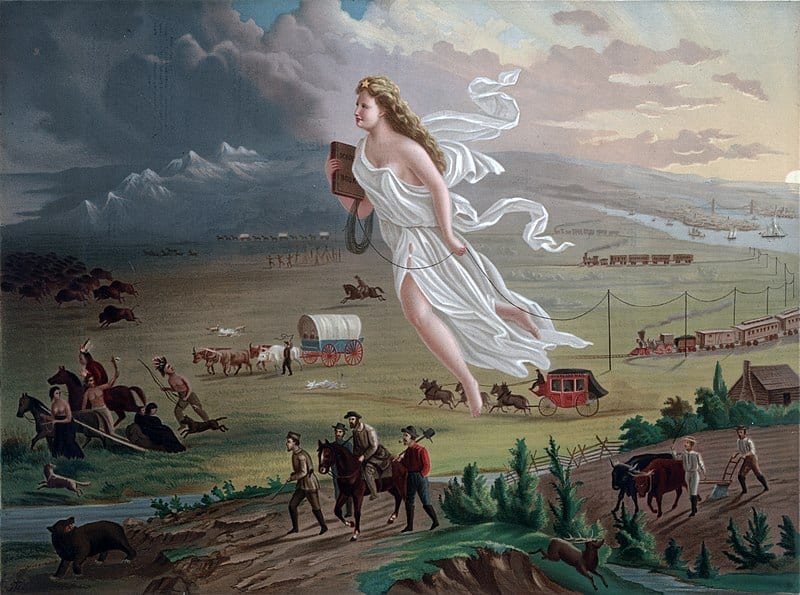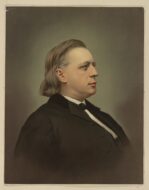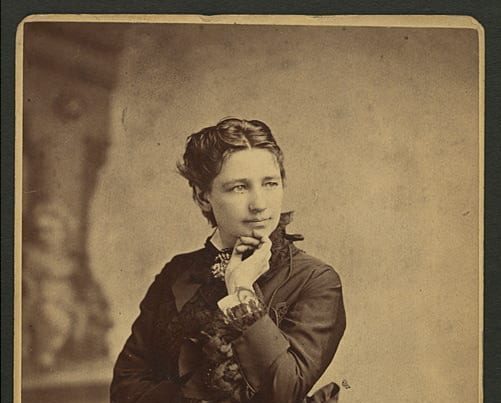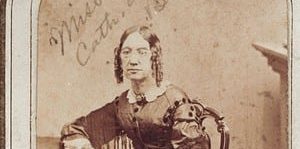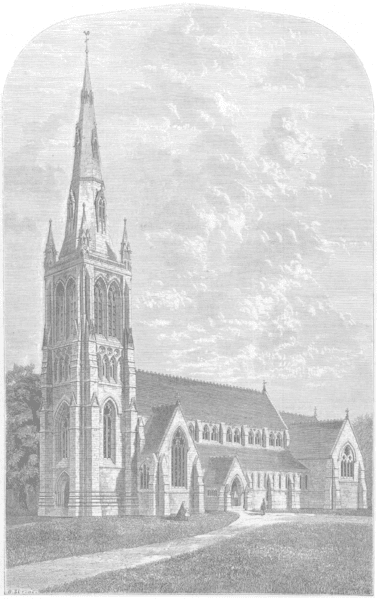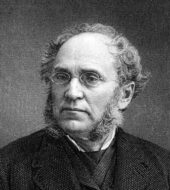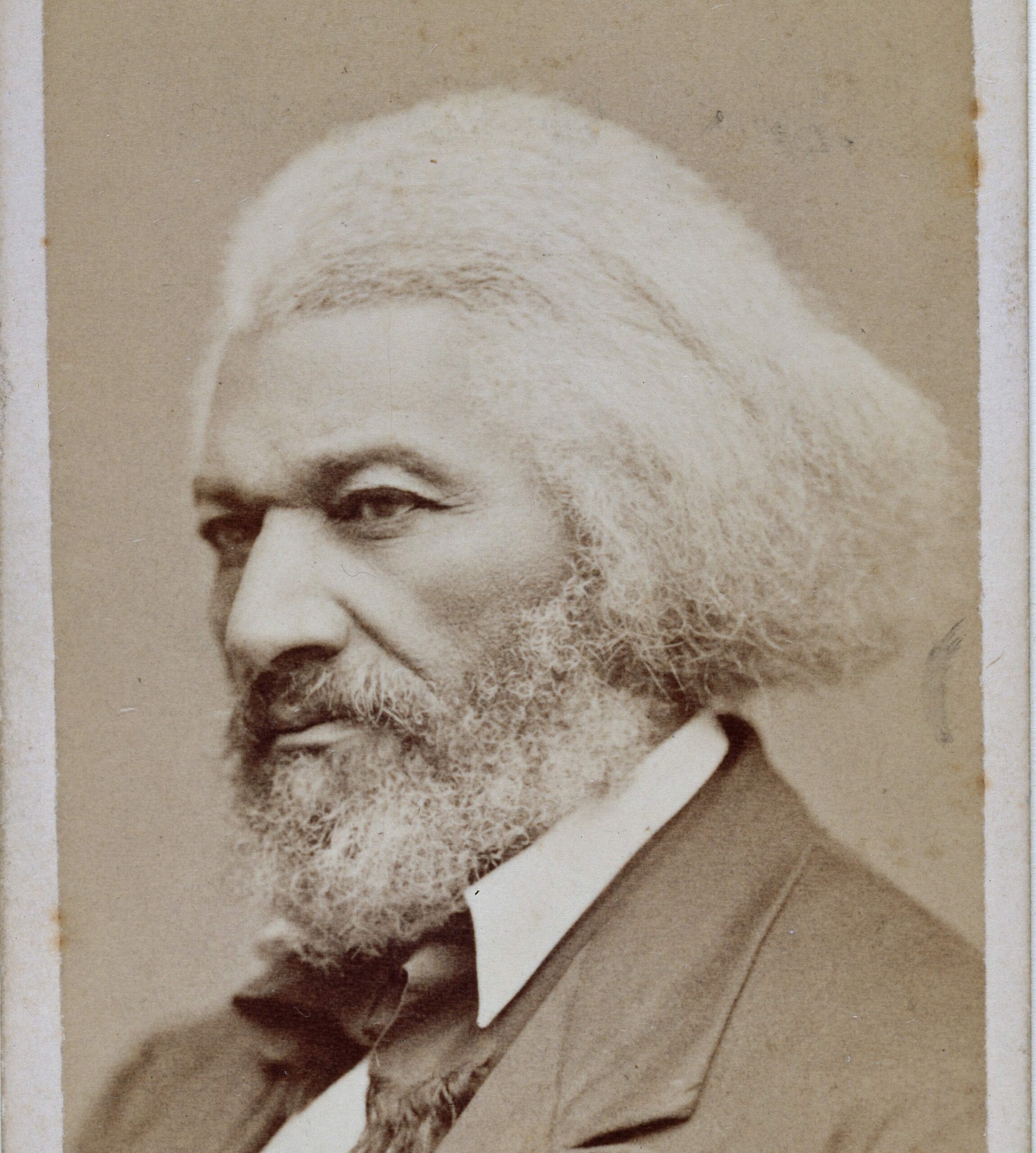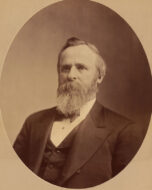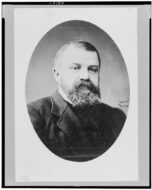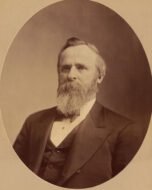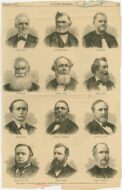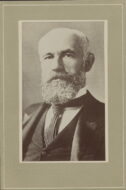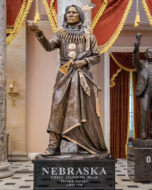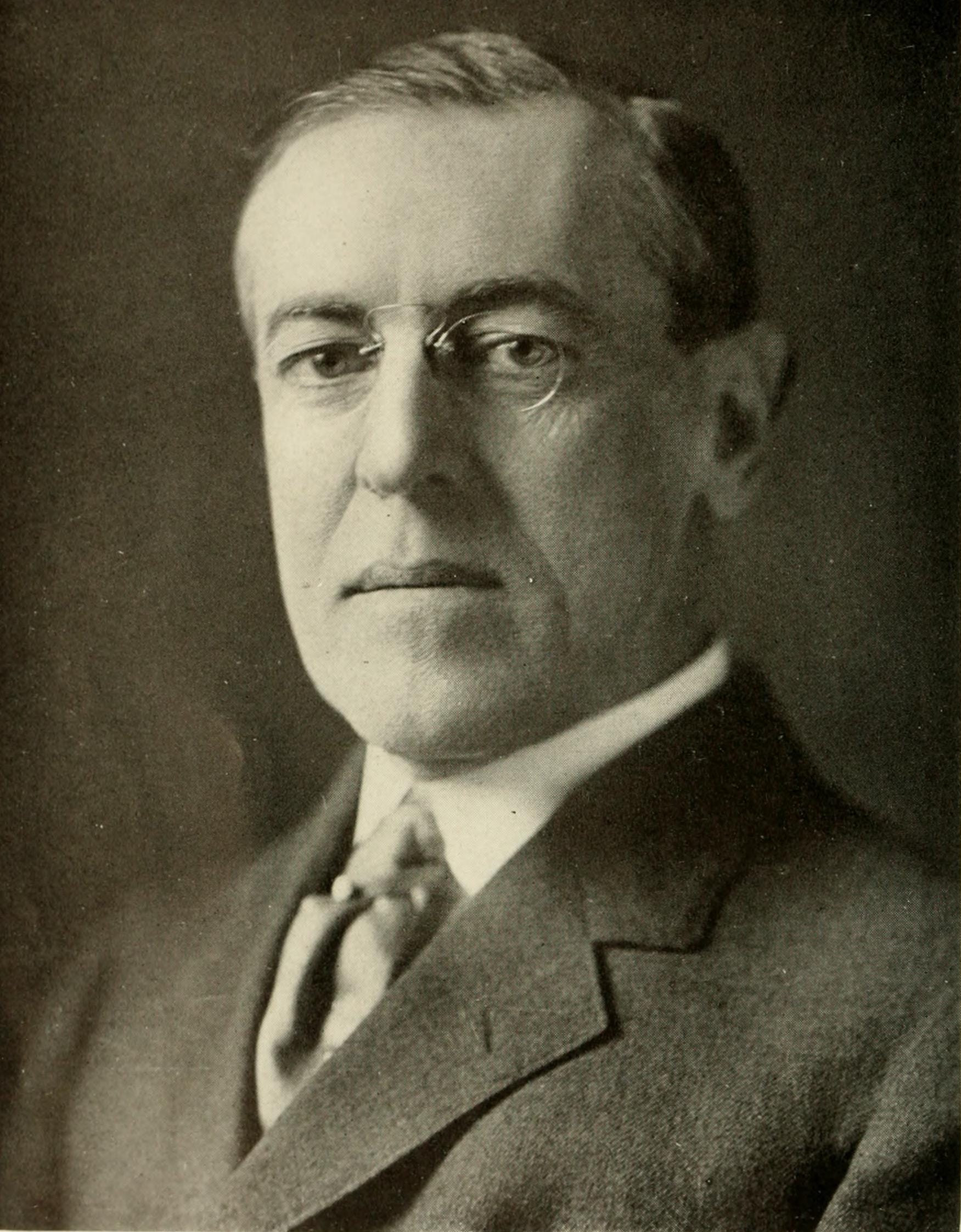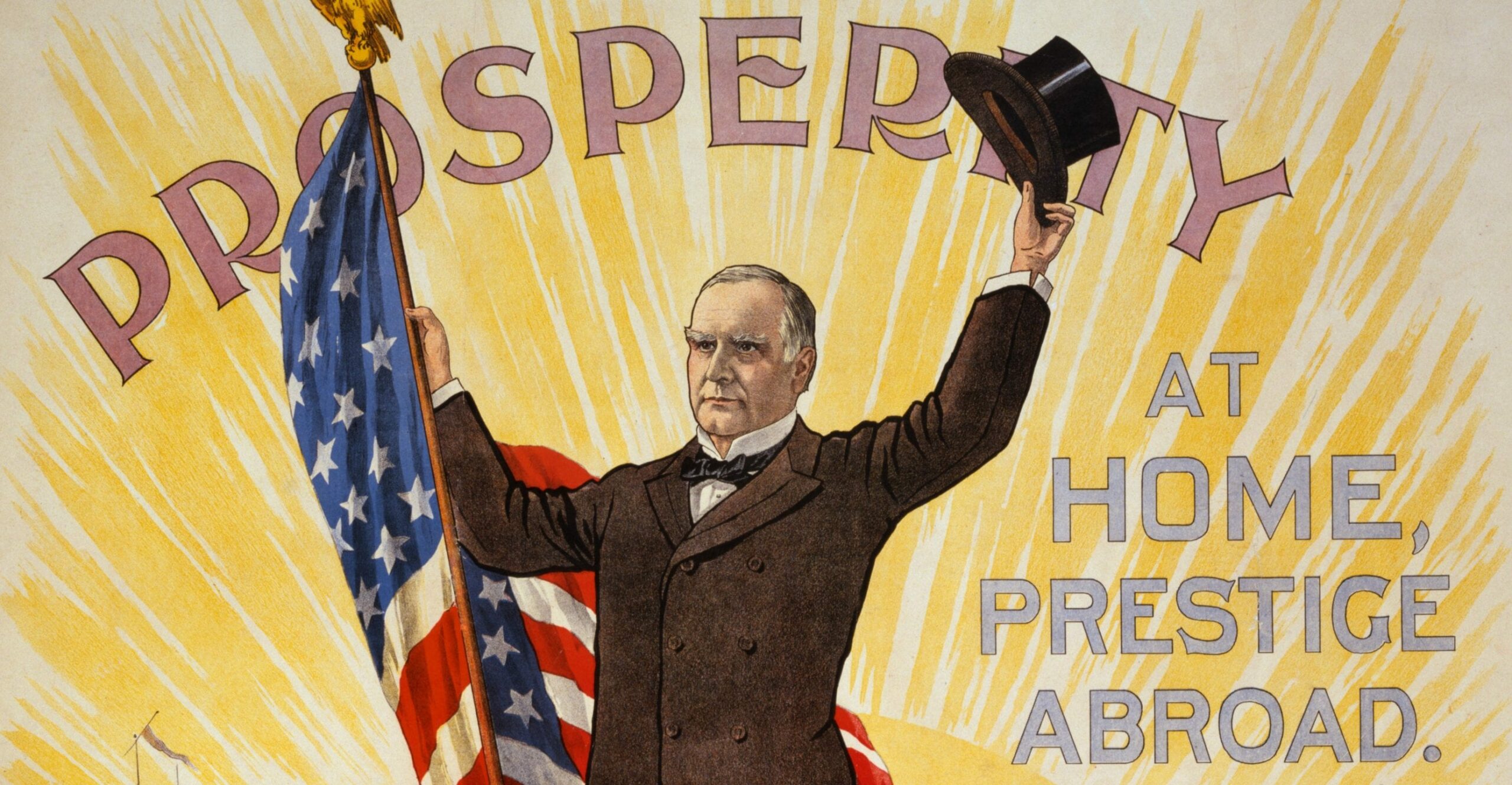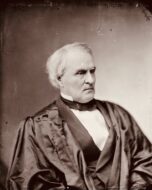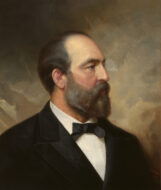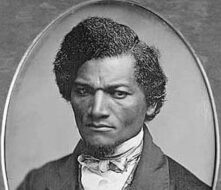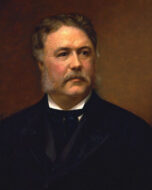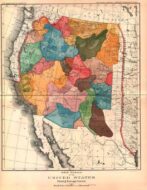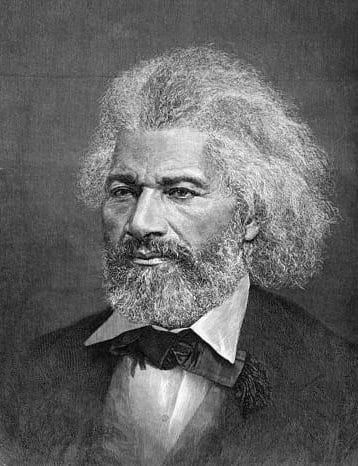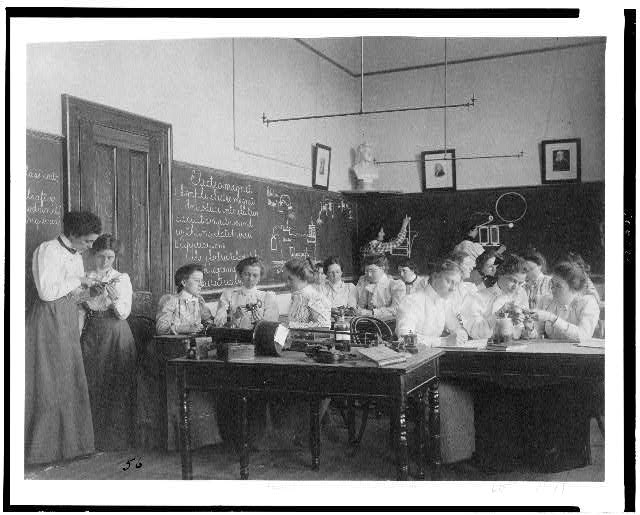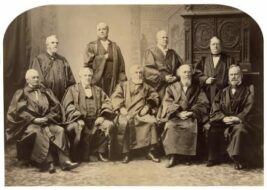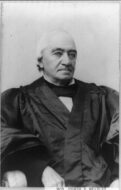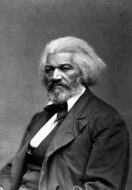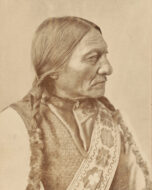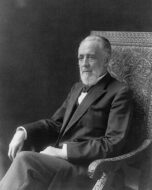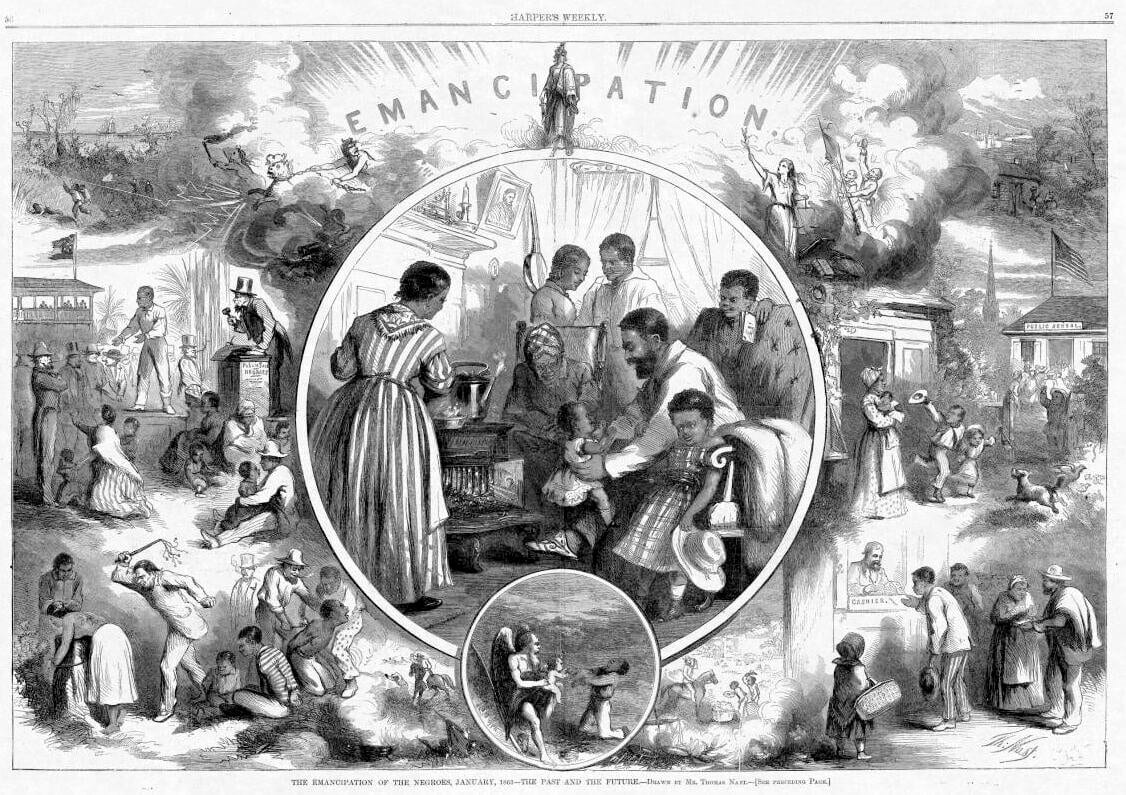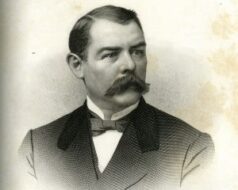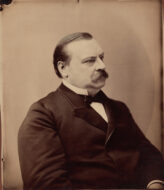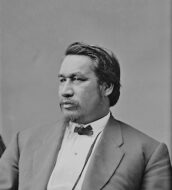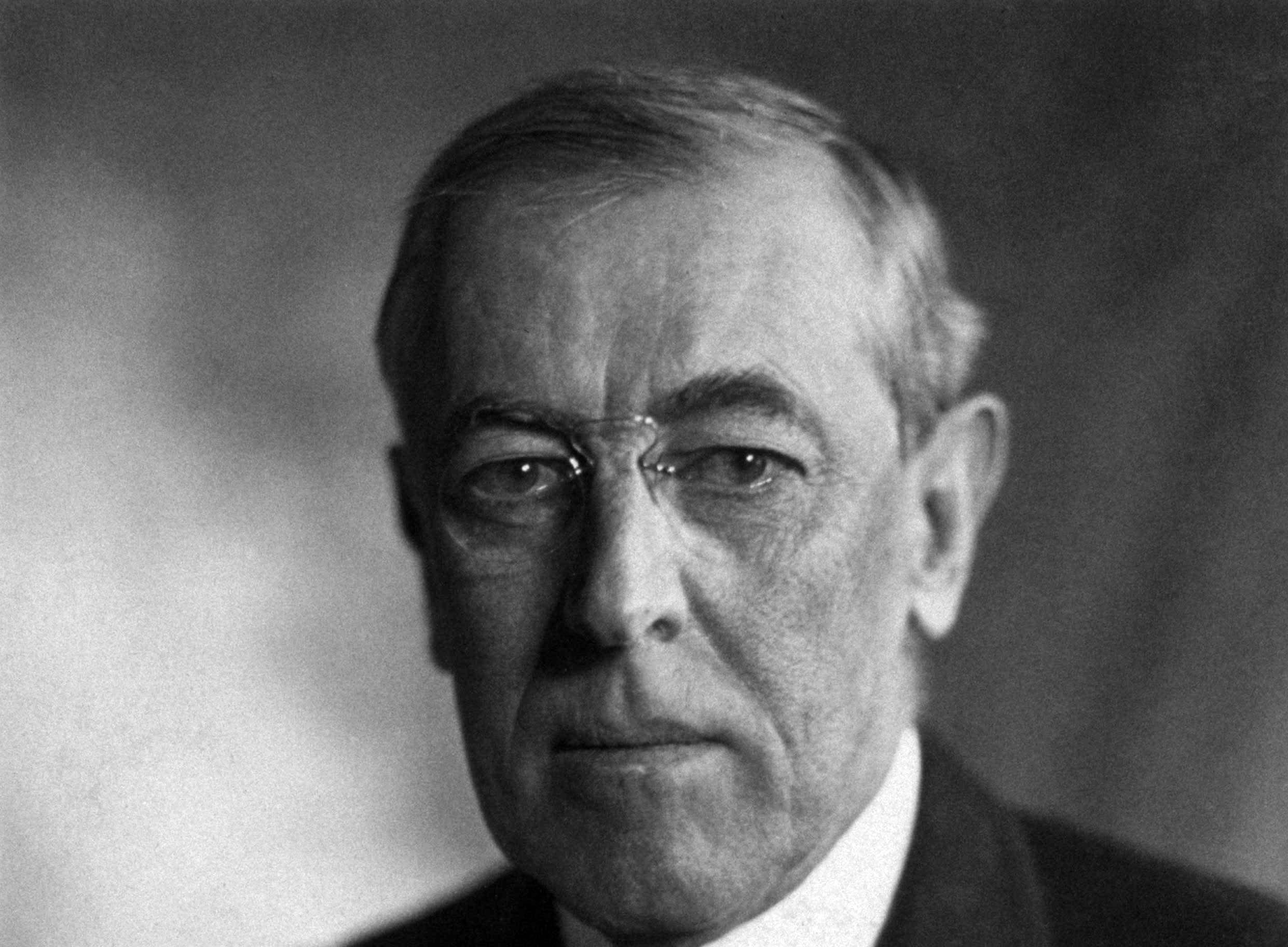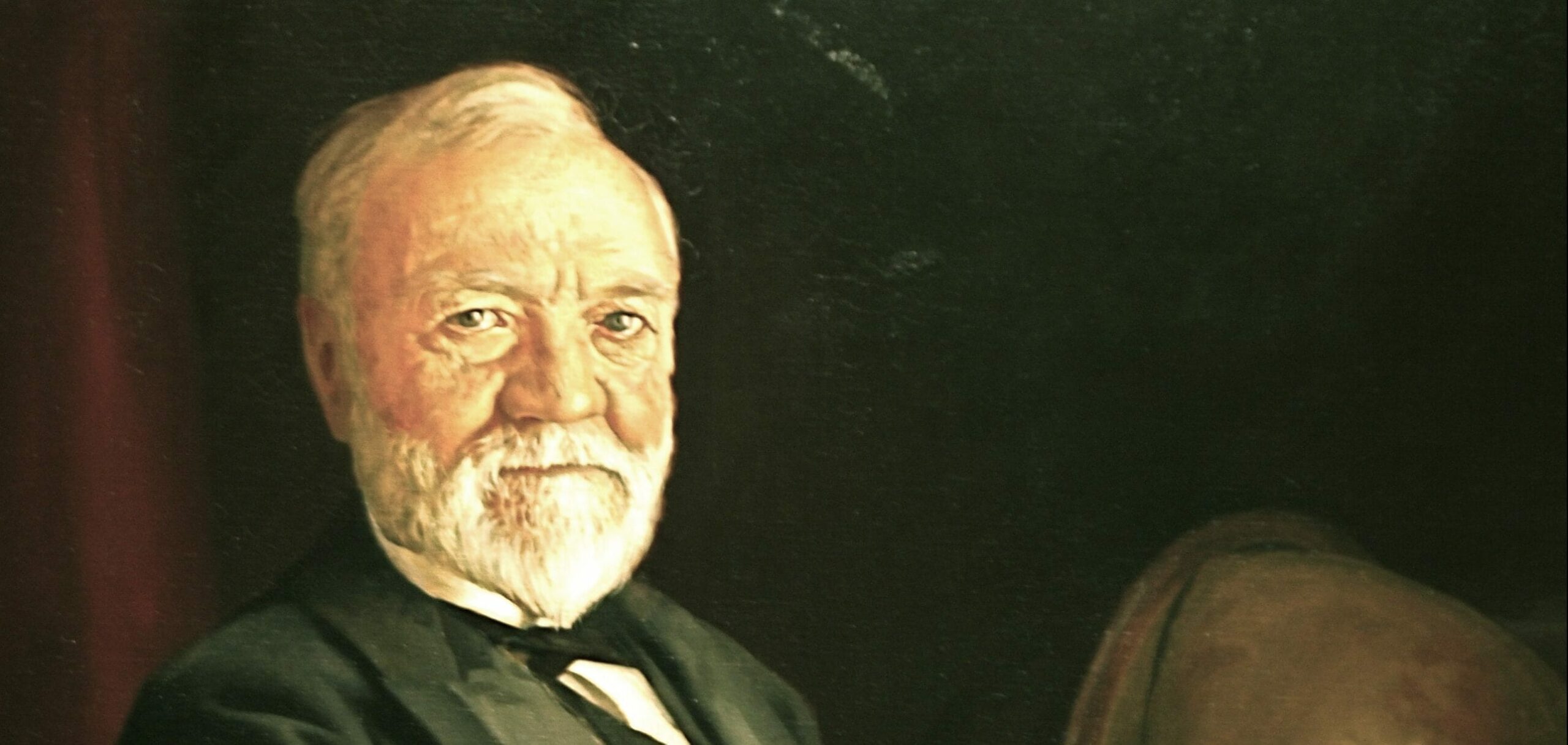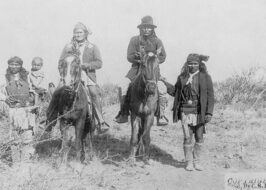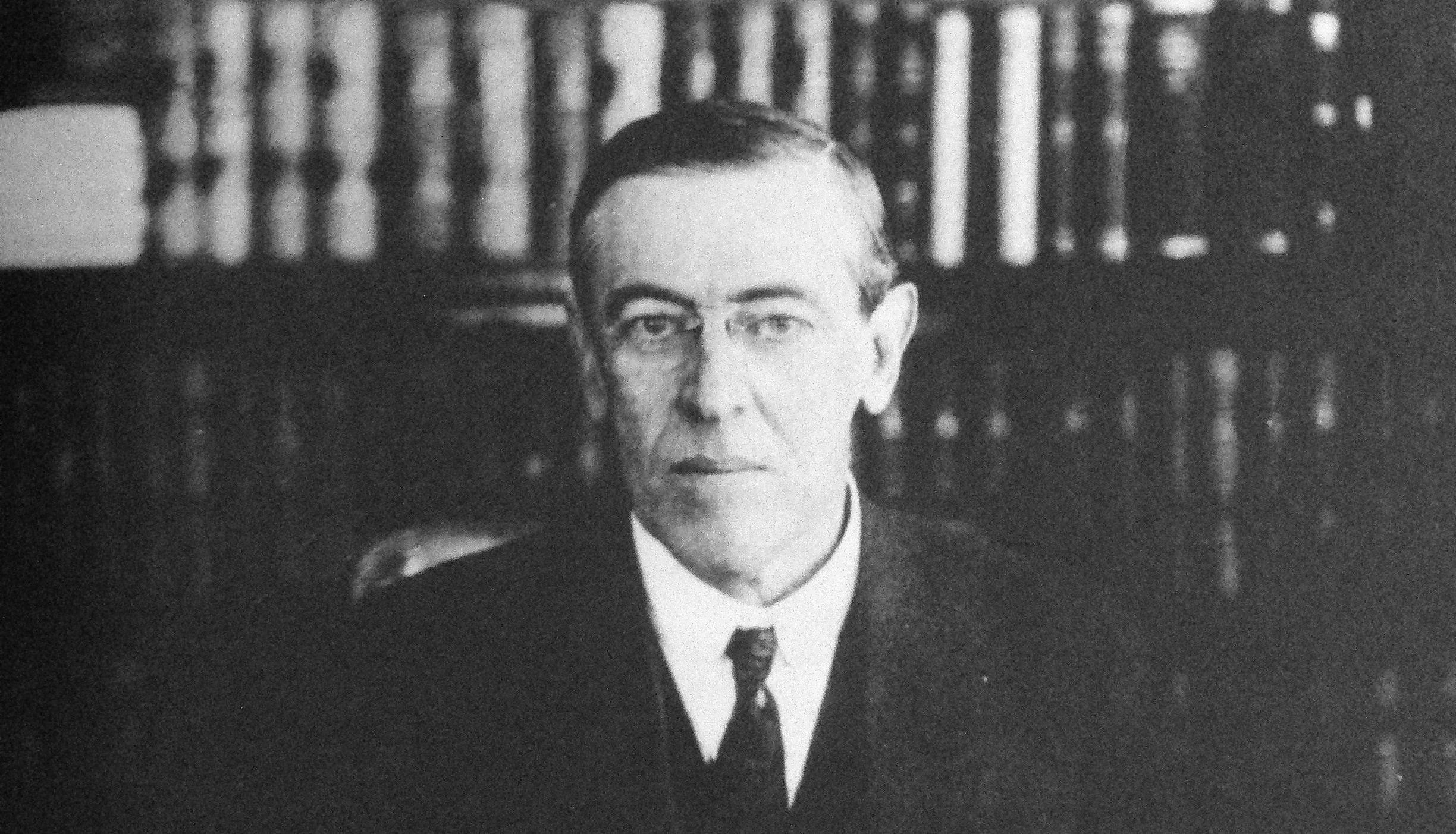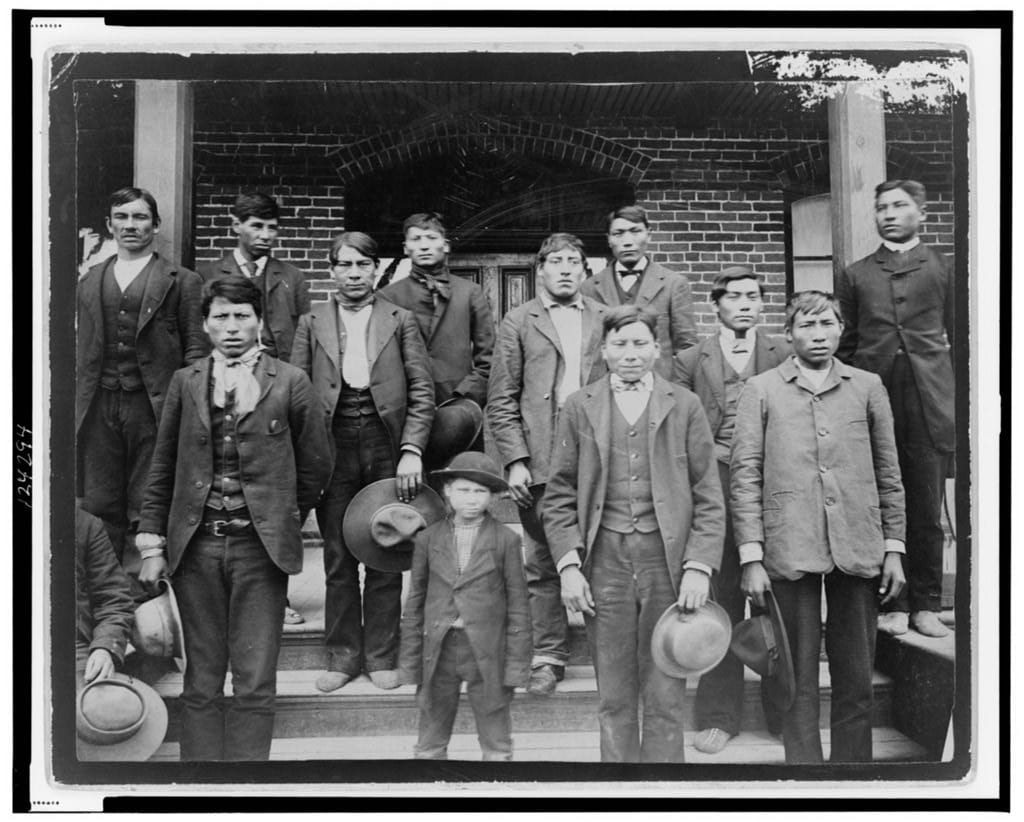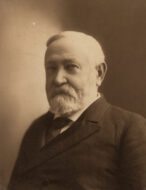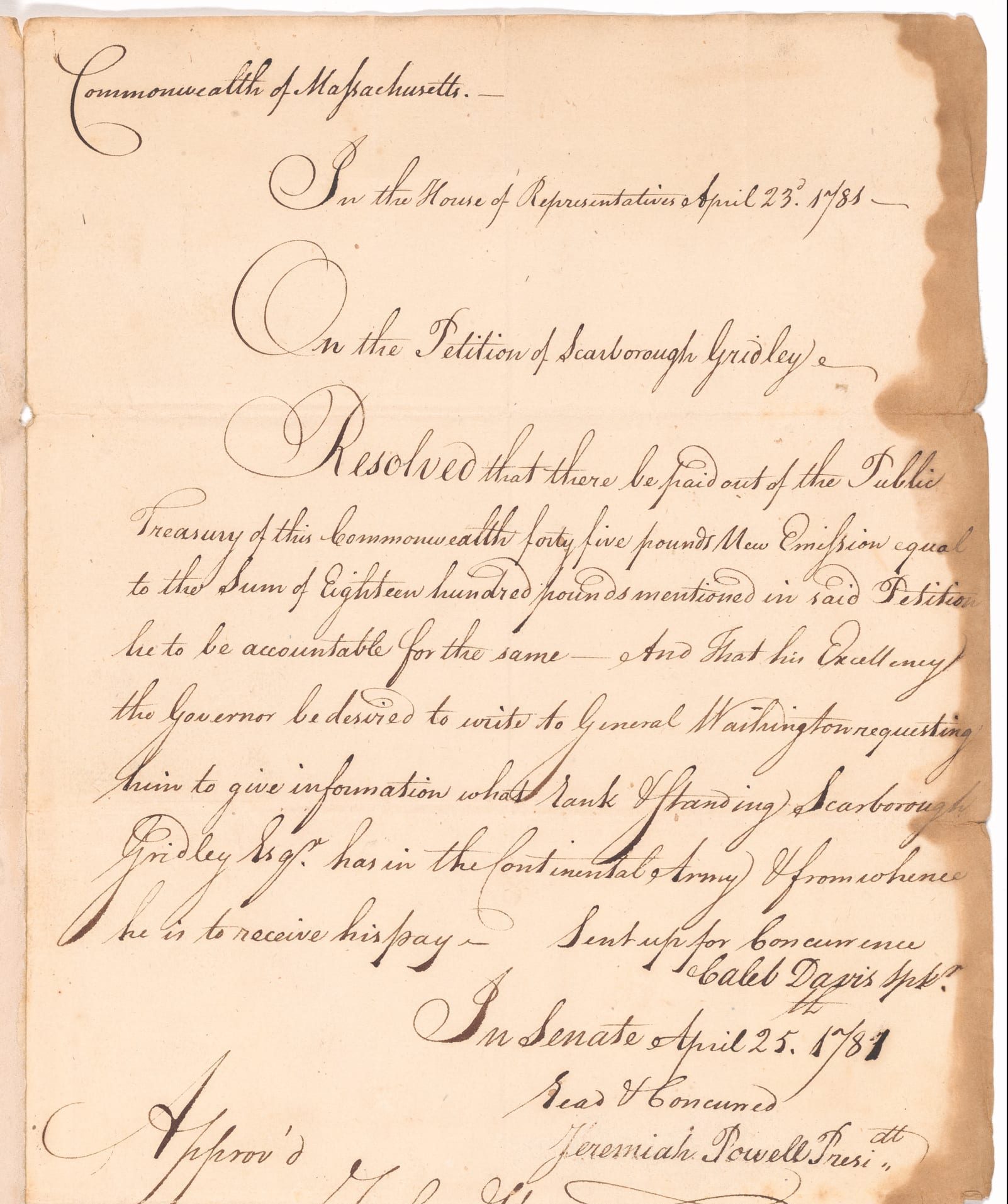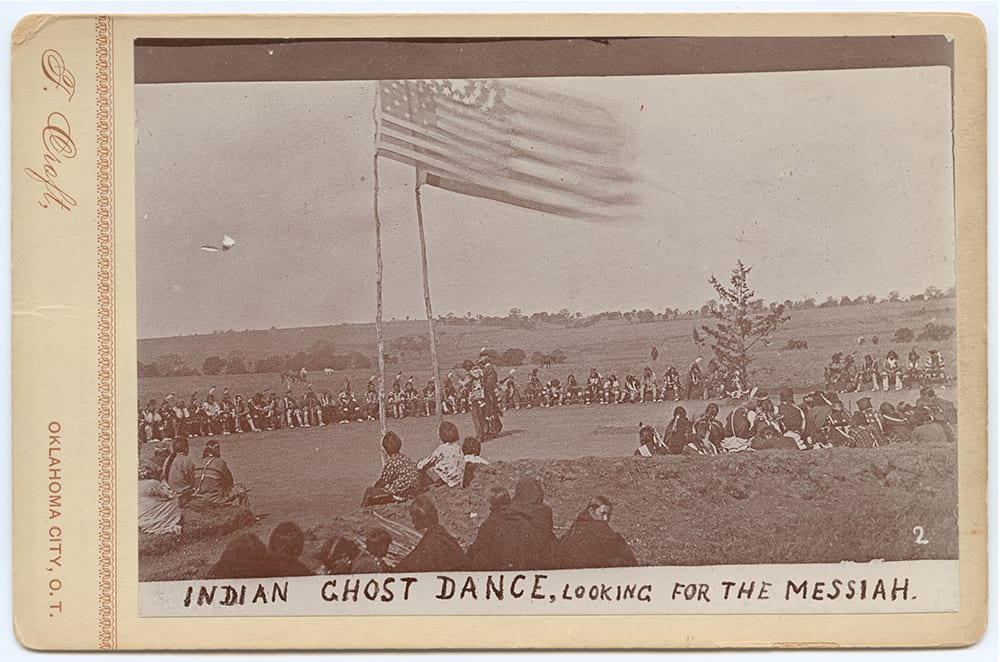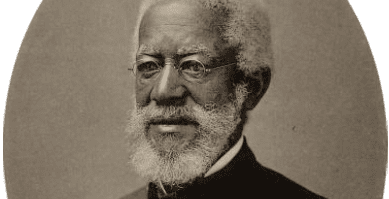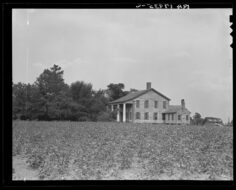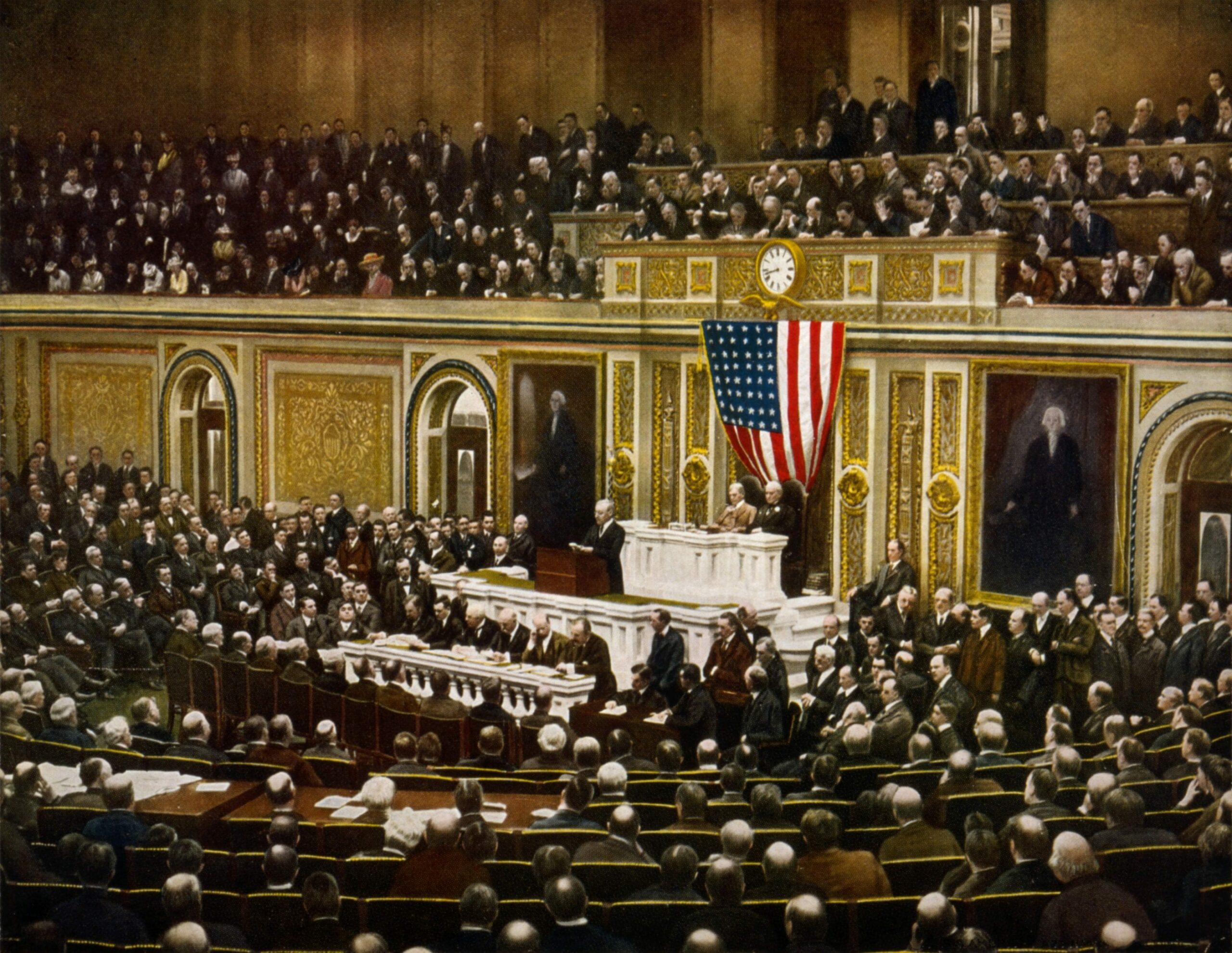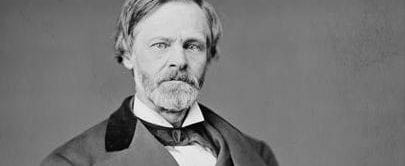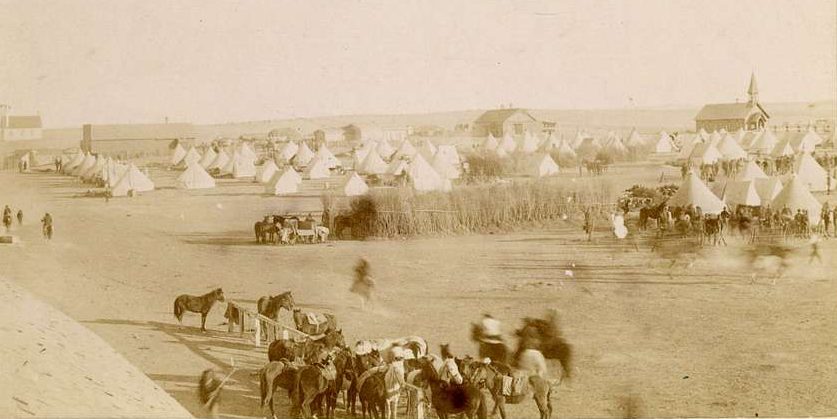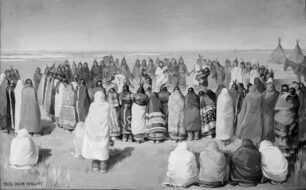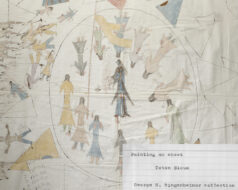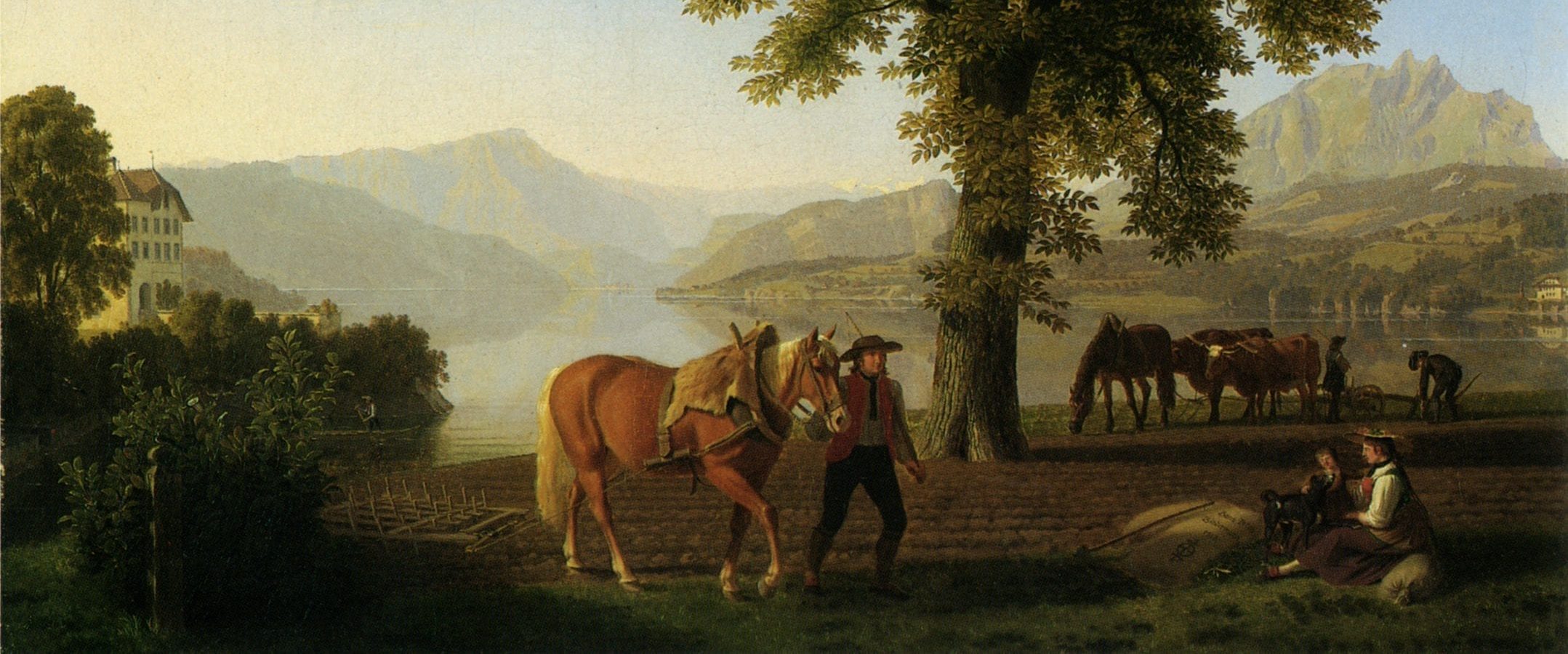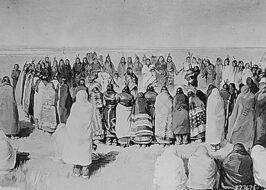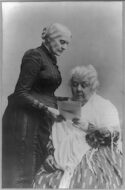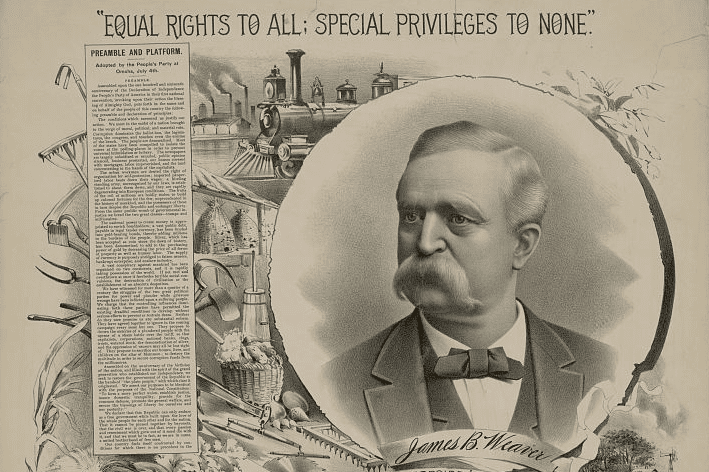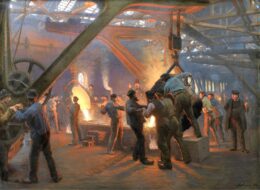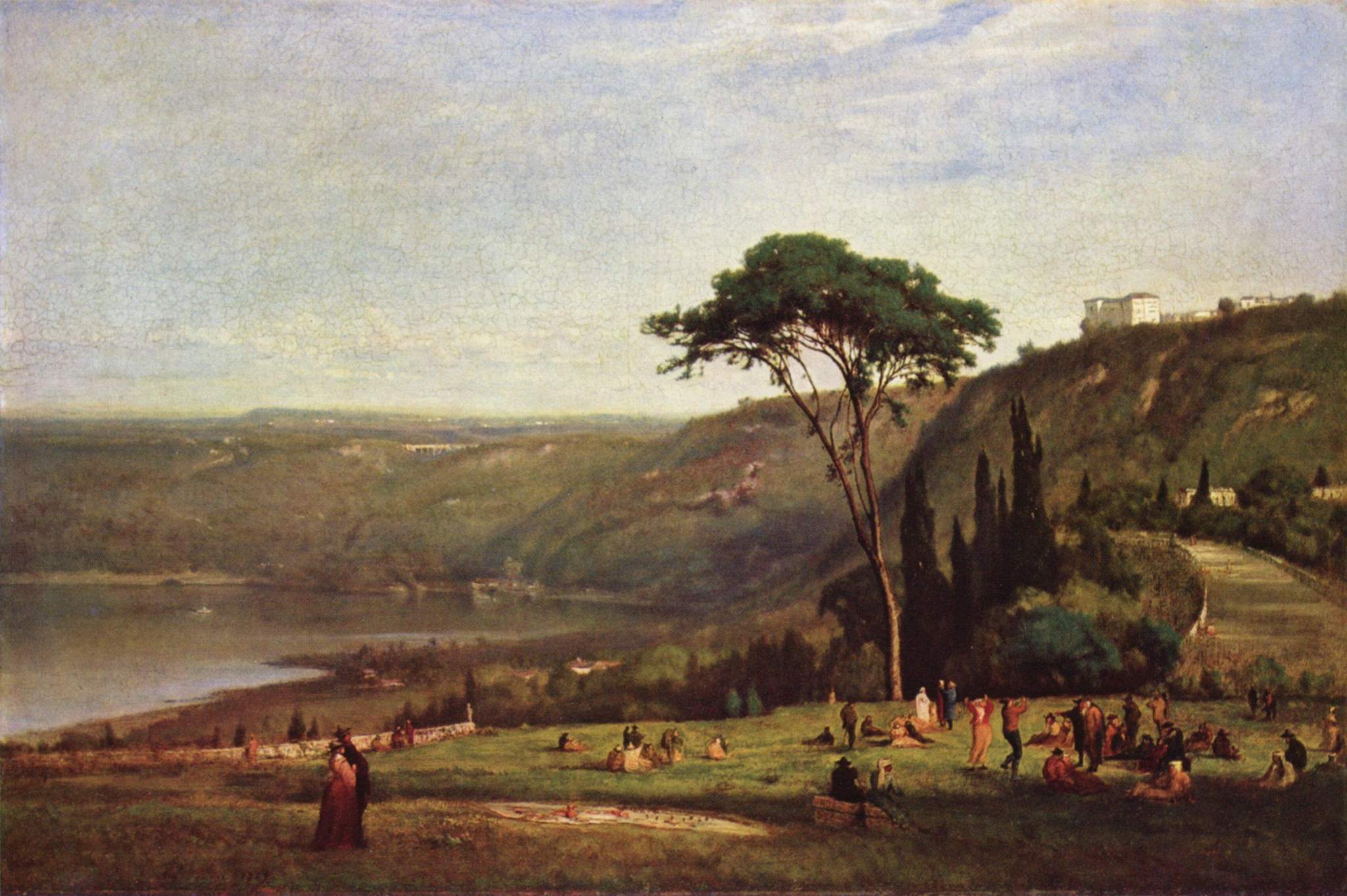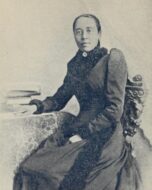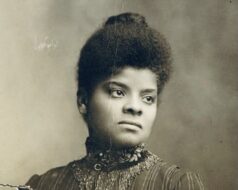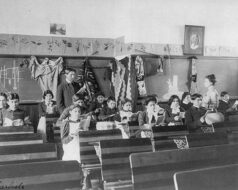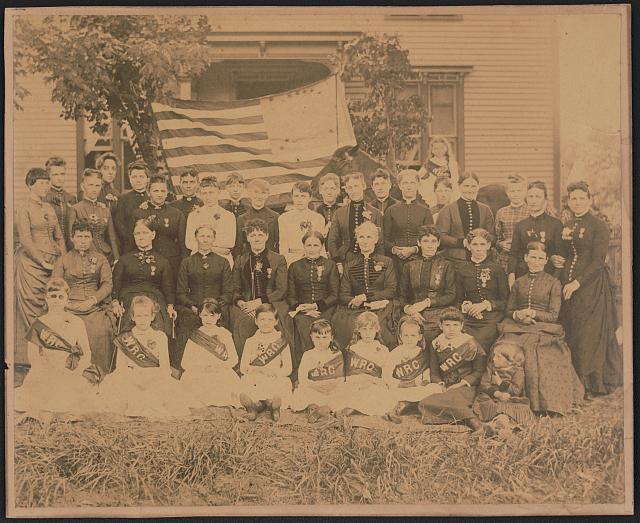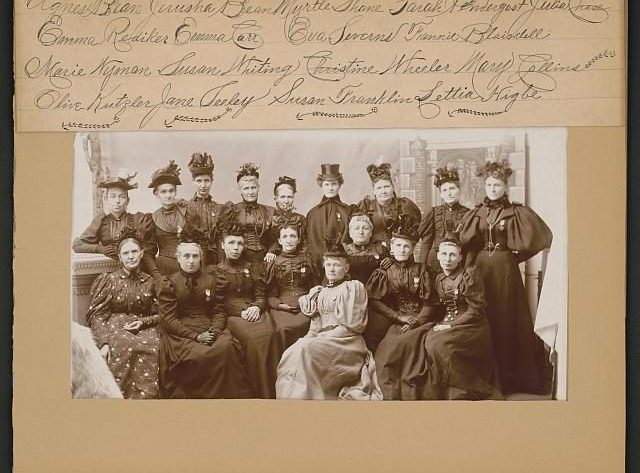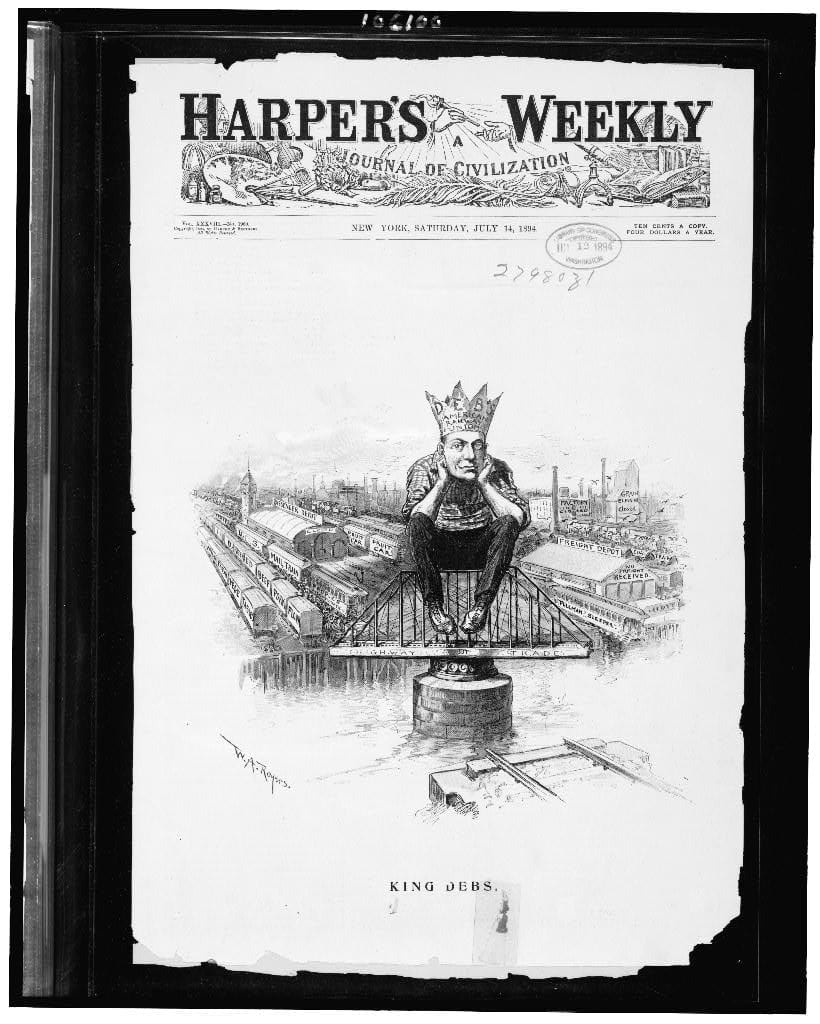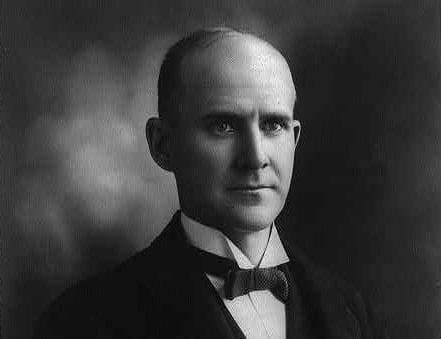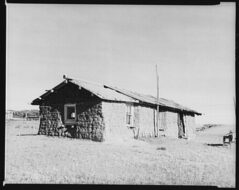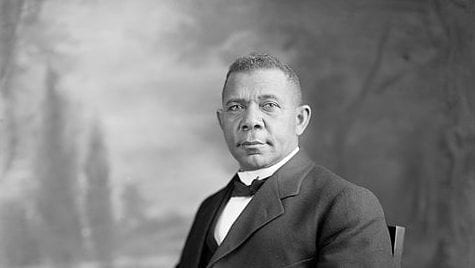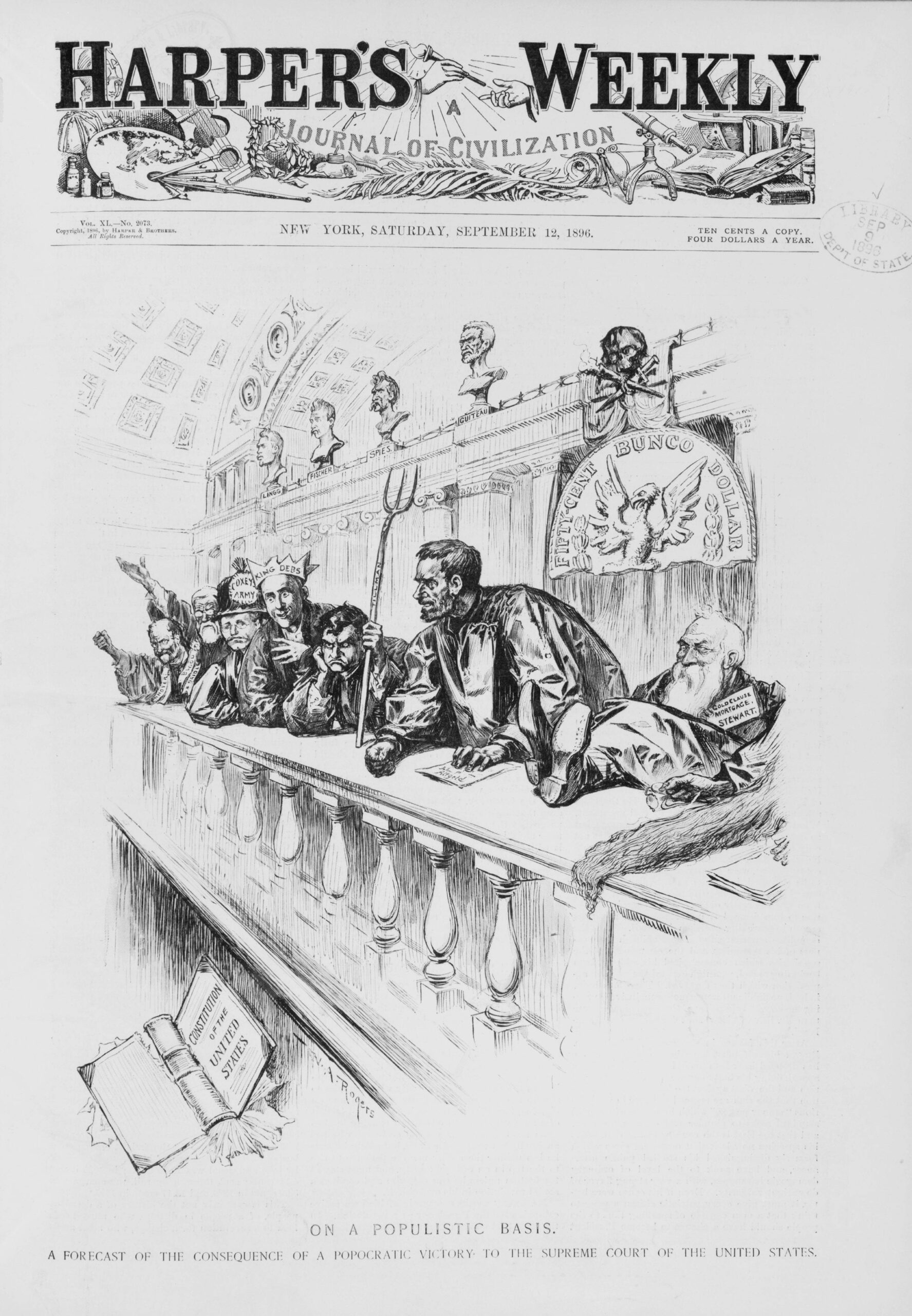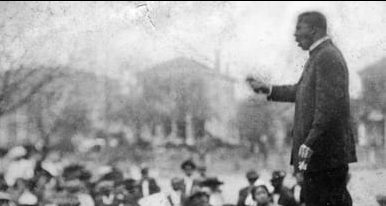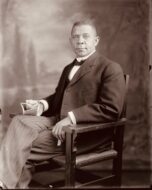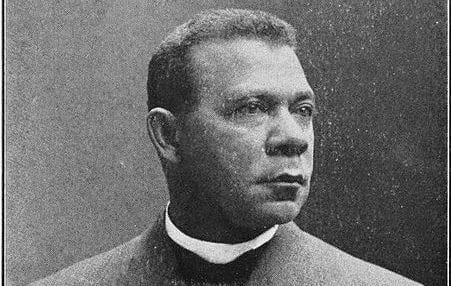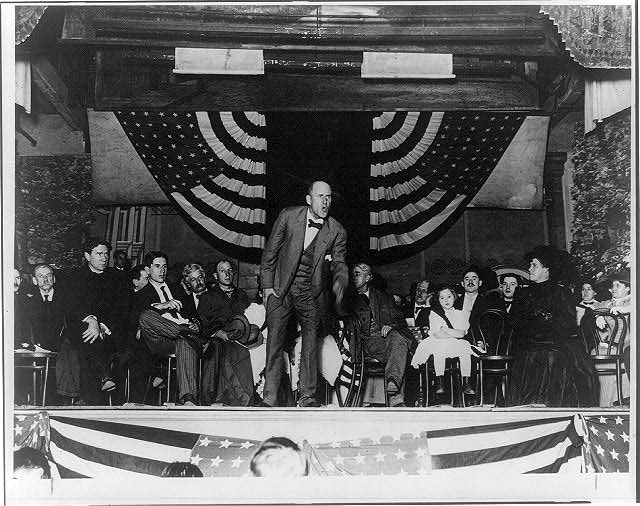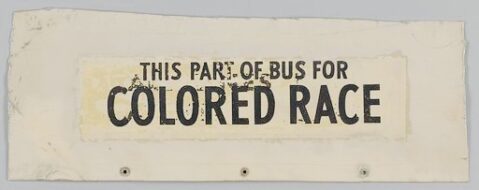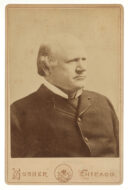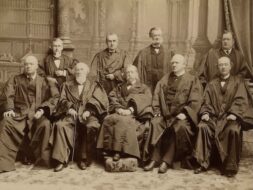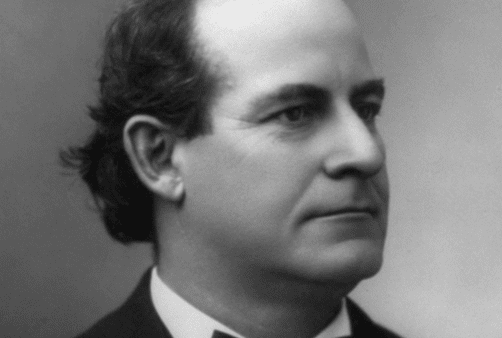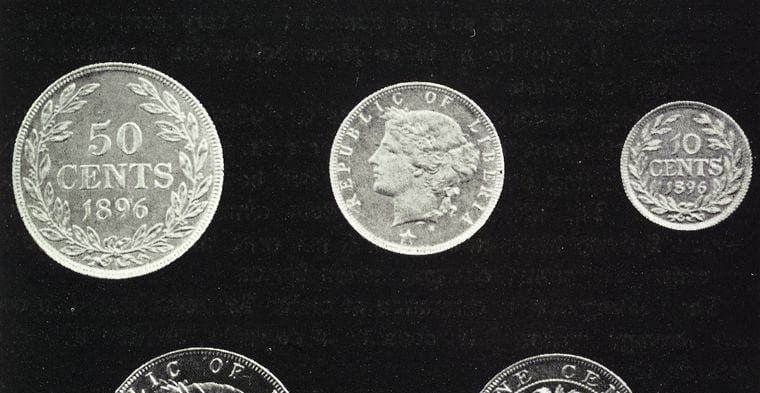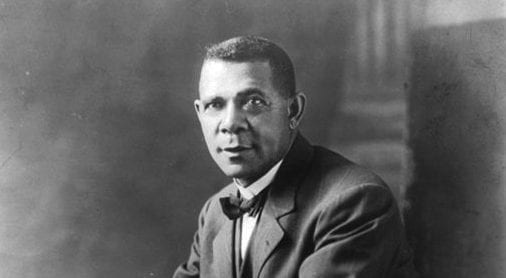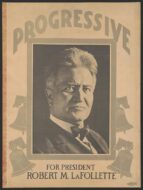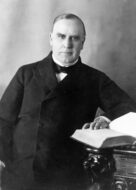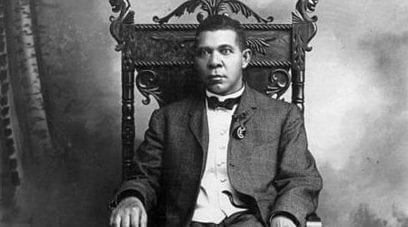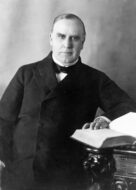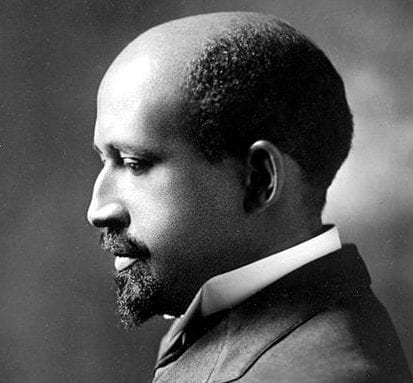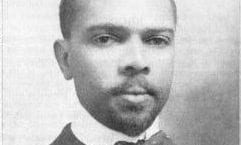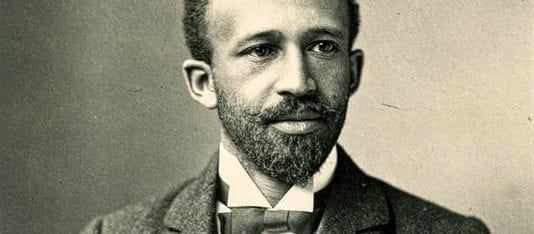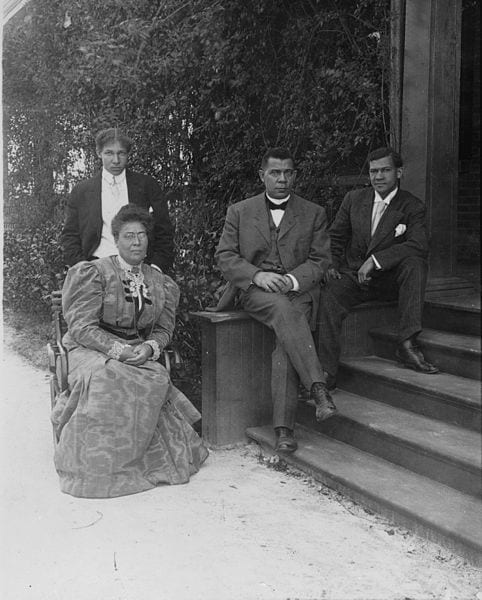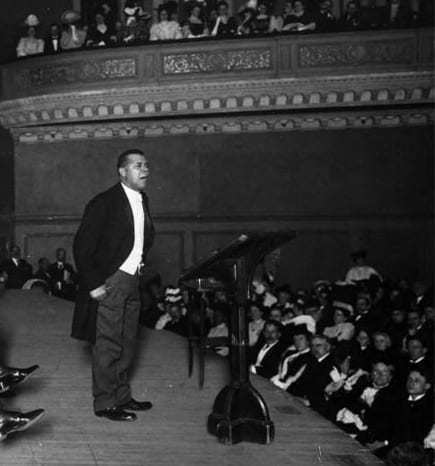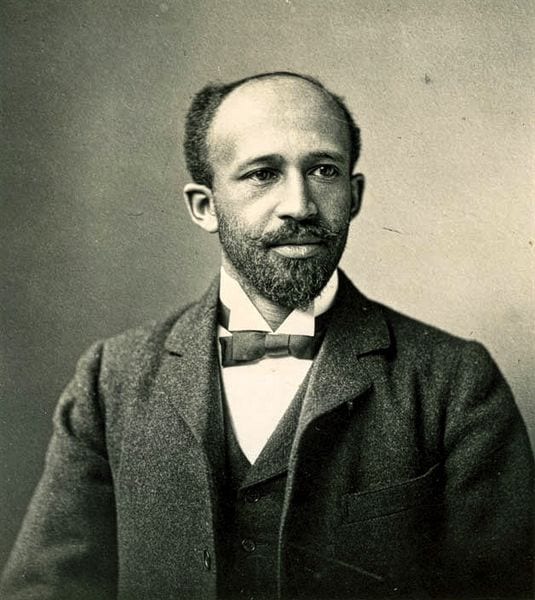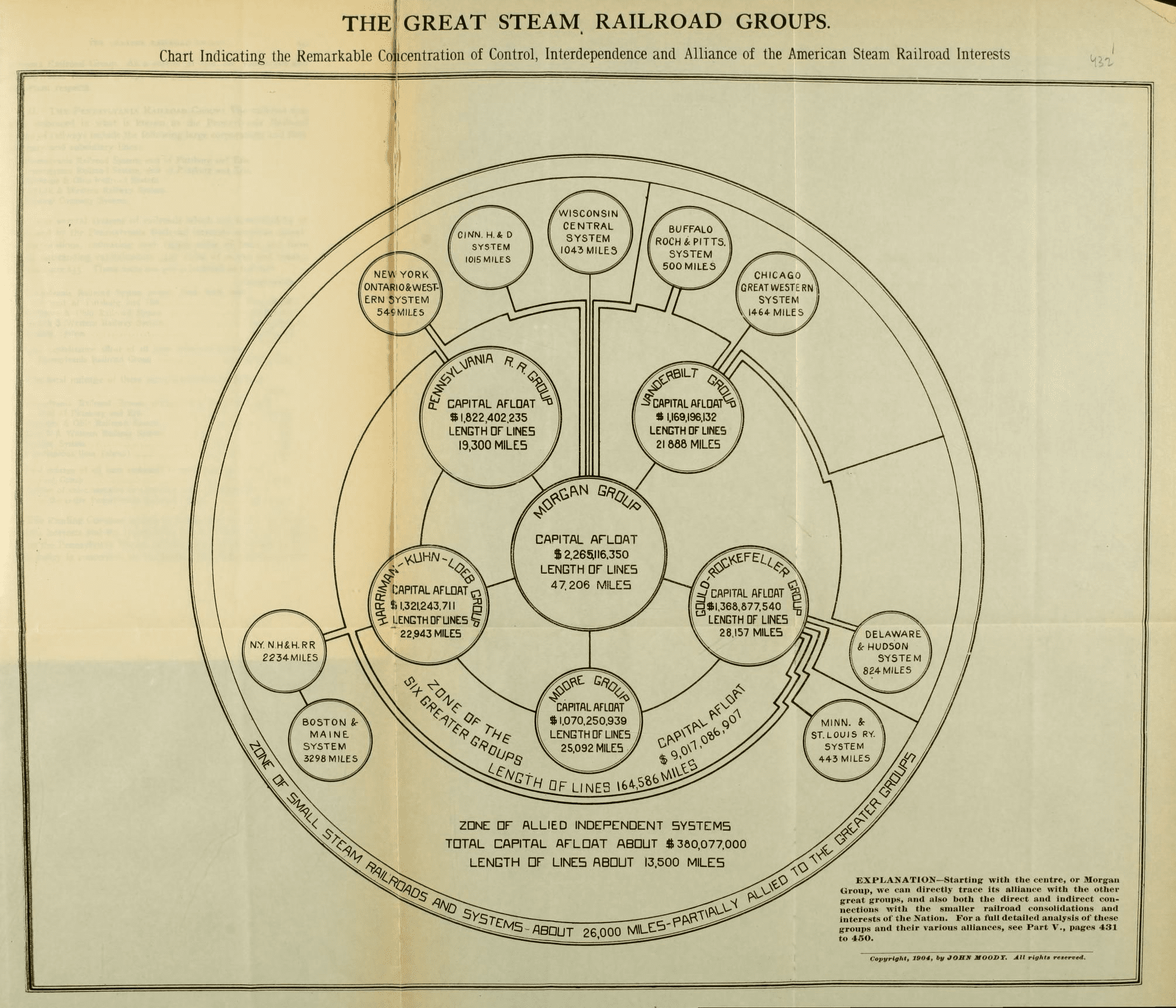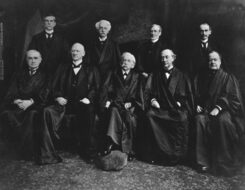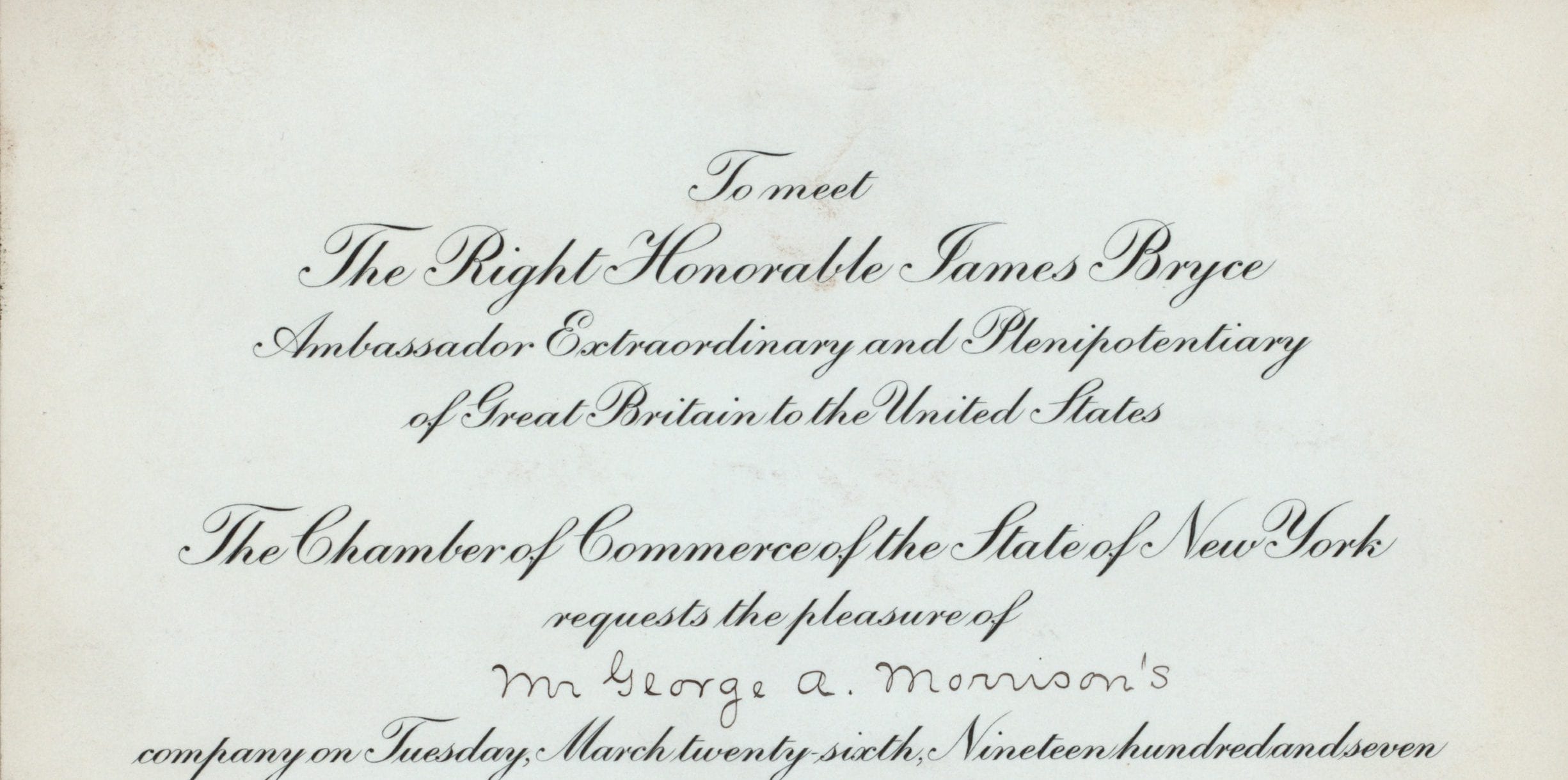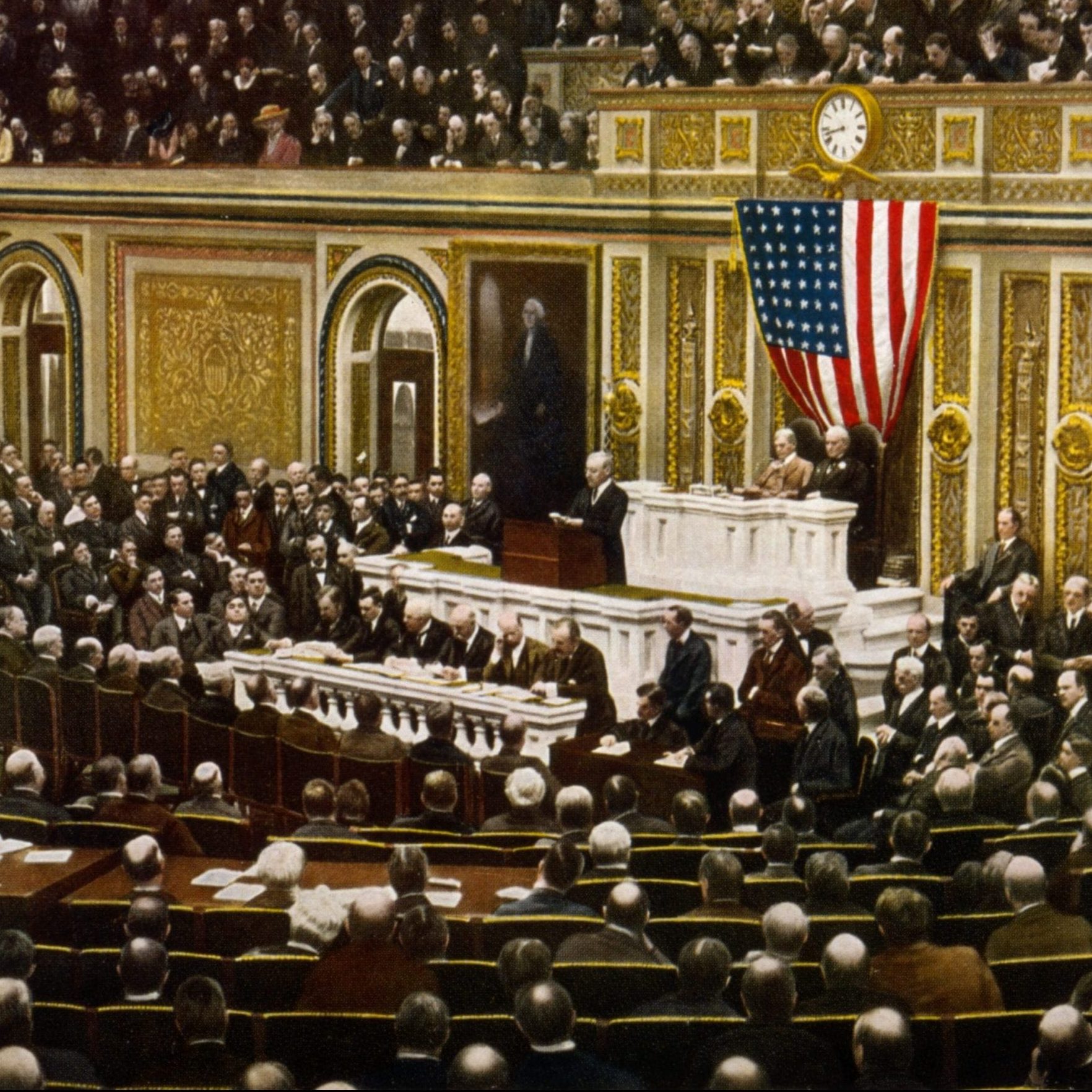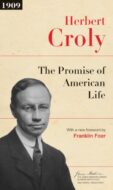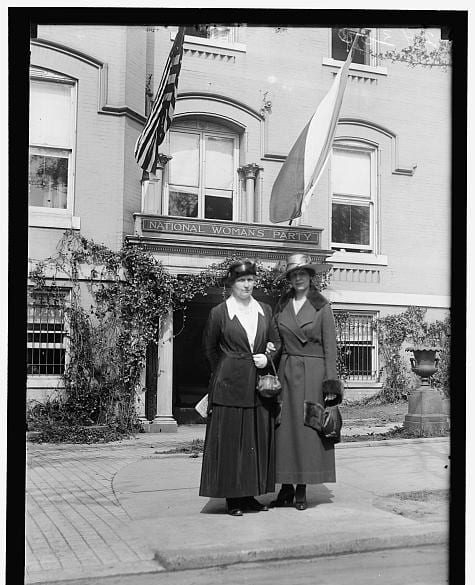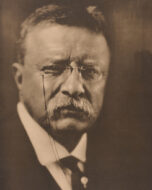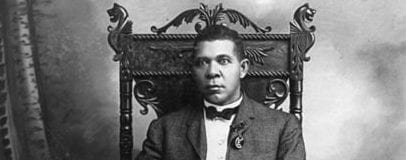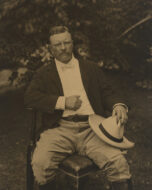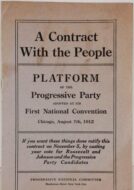
No related resources
Introduction
The Peace Policy instigated by the administration of President Ulysses S. Grant did not stop conflicts between Native Americans and westward-moving settlers. The settlers continued to encroach on Indian land. The Indians continued to resist. The 1870s saw numerous skirmishes, raids, and ambushes involving Natives, other Americans, and the U.S. Army. During the same period the military carried on sustained fighting with Comanches in the southern plains; Modocs in northern California; Apaches in the Southwest; Lakotas, Arapahos, and Cheyenne in the northern plains; Nez Perces, Piutes, and Bannocks in what is now Oregon and Idaho; Cheyenne in the central plains; and Utes in Colorado. The fighting in the northern plains most famously included the Battle of the Little Big Horn (1876), where a combined force of Lakota, Northern Cheyenne, and Arapaho warriors destroyed the 7th Cavalry, under the command of Lt. Col. George Armstrong Custer (1839–1876).
In the face of this continuing conflict, those concerned with the Indians’ welfare sought yet another new approach. One long-standing proposal was to give land to individual Indians rather than to the tribe, with the idea of turning Indians into farmers. Owning and working his own land, the argument went, would civilize the Indian and allow him and his children to become useful citizens. (Compare the attitude toward farming in the Farmers’ Movement) Grant had supported this idea, as had President Chester Arthur in his First Annual Message of December 6, 1881.
Laws allowing Indians to own land as individuals (“in severalty” was the legal term) were proposed frequently in Congress but always failed. In 1881, for example, the minority report on one such bill described the proposal as enacting a speculative theory (that landownership civilized the owner) on all Indians in America without even a test of its efficacy. The Indians had no experience of farming, the report pointed out, and not even Anglo-Saxons (clearly considered to be the superior race) would succeed at farming, if they knew nothing of it, simply because they were given land. The minority also noted that offering ownership to individual members of a tribe had been tried in one case previously without success. The Indians showed no interest. In addition, the minority claimed that the bill was contradictory: the Indians were to be given land because an Indian was a man like any other, yet the bill provided government protections for and guardianship of the Indian, implying that he was not like other men. Finally, the minority claimed that the real purpose of the bill was to dispossess the Indians of land given to them in treaties. (See 46th Congress, 2nd session, Report no. 1576, May 28, 1880. Party affiliation seemed not to matter when it came to voting for or against this severalty bill. Proximity to Indian land appeared to determine votes. The closer a representative was to Indian land, the more likely he was to vote for the bill.)
Finally, in 1887, the Dawes Act provided for individual Indian ownership of land. The act passed in part through the help of the public campaigns and lobbying efforts of the Friends of the Indian. These reformers gathered annually at Lake Mohonk in New York State to hold a conference to discuss Indian matters and plan how to carry out their work. In 1887, they assembled a few months after the Dawes Act became law to discuss the consequences of the law and the work that remained to be done.
Source: Proceedings of Fifth Annual Meeting of the Lake Mohonk Conference of the Friends of the Indian, September 28–30, 1887 (Philadelphia: Sherman and Co., 1887), 12–17, 67–69, 77–78, available at https://play.google.com/books/reader?id=oxNJAQAAMAAJ&hl=en&pg=GBS.PP7.
General Fisk:[1] During the years past we have debated some of the most serious problems in connection with Indian affairs, until the Mohonk Conference has risen to a place of commanding influence. Its utterances are seriously considered by legislators; they receive the thought of the public, and in many instances those charged with the administration of Indian affairs have given heed to our advice. Our constituency is a happy combination of elements, combining representatives of the various religious bodies who are active in Christian and educational work among the Indian tribes.
From the Indian Rights Association,[2] with their thorough business aims and methods for the solution of the Indian problem; from the Women’s National Association[3] who respond to the cry of the most needy of our tribes, and whose devotion to the Indian women and Indian homes ought to receive the God-speed and hearty support of all who would uplift the Indian race; from the Indian Committee of Boston,[4] whose magnificent services for the Indian for the last ten years entitle them to the gratitude of all people; from the Board of Indian Commissioners;[5] and from the ranks of the noble and philanthropic men and women all over this land, hither come the best and truest friends of the Indian, men and women who love justice, and whose persevering wisdom stands and knocks at the portals of power until “whatsoever things are just”[6] are to be conferred upon their clients, the American Indian.
Since we last convened we have progress to report—substantial progress in legislation. The passage of the Dawes Bill[7] providing for the allotment of lands in severalty, the extension of law over the Indians, are the beginning of a new epoch in Indian affairs.[8] . . . Those of us who have been waiting and watching for more than a score of years, look upon the existing state of things as very encouraging, although there is so much yet to do. There are about 250,000 Indians exclusive of those in Alaska; 80,000 of them today wear citizen’s clothing complete; 60,000 more in part; 40,000 Indians read and use the English language in the transaction of their business, and their number is rapidly increasing. There is much yet to be accomplished. . . .
Prof. C. C. Painter:[9] The Dawes Land in Severalty and Indian Citizenship bill, . . . must surely, as its provisions are carried out, undermine and destroy the present Indian policy, and the machinery by which it is carried out. . . . Under its provisions [the Indian] steps out of his undifferentiated, impersonal tribal relation into one of individualized, responsible citizenship, under the constitution and laws of the republic. All things are made new in his status and relations; perforce all things must be made new in our methods of dealing with him. When we make him a citizen, we recognize his manhood with all its inherent rights under the Declaration of Independence and Constitution. What power can an Indian agent, carrying out the rules and regulations of a bureau, have over a man who has refuge under such protection? Whatever restrictions Congress in its wisdom may put upon his power to alienate land to which he is after twenty-five years to have a title in fee simple,[10] none can be put upon a free citizen except such as are imposed alike upon all. . . .
A crisis has been created rather than reached in the effort we are making for the Indian. He is about to be thrown into the seething activities of our complex civilization and take his chances in free competition with other races. He must receive at once the best possible equipment for this emergency; a preparation and education which he could never receive under the old policy of enforced isolation, legalized pauperism and inevitable idleness and debauchery. The most formidable obstacle to his civilization has been the policy under which it has been attempted. This removed, we must adapt our methods to his conditions and needs, which are more peculiar than is his nature, which is that of every human being. The reservation walls being down, and the restraining power of the agent broken, he and his children will become a race of wanderers and beggars, unless they are met, as they escape from a hopeless bondage, with influences wise enough and large enough to teach them the nobility of manhood and the uses of freedom.
There is now scope and hope for the schoolmaster. . . .
The president has asked for a commission composed of Army officers and citizens to be appointed by the president of the United States. The duties of this board, as he has suggested it, are to be only advisory. Let us have such a commission, so constituted and so appointed, but with enlarged functions. . . .
The duty of carrying out the provisions of the allotment bill would fall to this commission, and a care for the Indians during this transition period, as they pass out from the bondage of the bureau into the liberty of men and citizens. . . .
Senator Dawes: . . . It seems to me this [the Dawes Act] is a self-acting machine that we have set going, and if we only run it on the track it will work itself all out, and all these difficulties that have troubled my friend [Painter] will pass away like snow in the spring time, and we will never know when they go: we will only know they are gone. . . .
We had better be employed taking, one by one, all these Indians, and making citizens of them, and planting them on their 160 acres of land,[11] telling them how to go forth among the white men of this country and learn the ways of the white man, and stand up and take their part in the great work of the governing of the Union; not put a new guardianship over him. . . . That is putting new fetters upon him instead of emancipating him, and putting him forth and bidding him to be a man. What he earns on this farm will help him learn the value of it, if you clothe him in his right mind, put him on his own land, furnish him with a little habitation, with a plow, and a hoe, and a rake, and show him how to go to work to use them. Now can you put a guardian around him? You might just as well put a plant in a cellar in the dark and bid it develop and bear fruit. The only way is to lead him out into the sunshine, and tell him what the sunshine is for, and what the rain comes for, and when to put his seed in the ground. When will he know that under new guardianship any better than under the old system? The idea is to make something of him, to make a man of him, and here is the power given you to do it, and it is to be done, not by any commission, but by individual efforts. He is to be led out from the darkness into the light; he is to be shown how to walk, how to help himself. He is to be taught self-reliance, or he will never be a man. . . . His education is to fit him for the new field in which he is to abide. It can’t be in the school he has been in in the past. . . .
Mr. Painter: . . . I see no difficulty in appointing a commission such as the president has appointed in relation to railroad matters.[12] . . . I recommend such a commission to be appointed with such range and such opportunity and such discretion. The Indian is in some way to be taken care of in this transition. Mr. Dawes says he is to be led out—by whose hands?
Senator Dawes: By yours.
Mr. Painter: I have no time to do that, and your law and your regulations would interfere with me, as they do with our religious societies when they attempt to come forward and undertake some of this work. I do not propose that the Indian should be put back into bondage again, but how are these district schools to be maintained on what are now large reservations where is nothing but Indians, except as some provision shall be made for these? I ask who is going to take charge of these funds and administer them when the Bureau [of Indian Affairs][13] can no longer do it? What is to be done in reference to the Indian in view of his changed relations? . . .
A letter from Miss Fletcher was here read as follows:[14]
Winnebago Agency, Nebraska in the field, September 23, 1887
Dear Mr. Smiley:[15]
Much has been accomplished since the last Conference. An epoch in the history of Indians is marked by the passage of Senator Dawes’s Severalty Bill. How great a change has taken place only those who are working under its provisions can fully recognize, and even they cannot as yet realize all that it portends. It is no exaggeration to say that the Indian problem has changed its base. Heretofore it has been mainly a matter with the government, legislative and executive. Henceforth it rests mainly with the people, the Indians, and the men and women of the state and counties in which the former reservations lay. This change is a very great one and a very serious one. . . . [I]t was inevitable if the Indian was to escape extermination, and to be permitted to possess his own manhood.
. . . It is the people’s work now to care for the Indian’s advancement in education and civilization. Permit me to point out some of the things that need the attention of the thinking men and women in this new adjustment. I would not offer these points, if my experience among the Indians themselves, and my staying overnight in the houses of the bordering settlers, had not given me advantages of observation that have aspects common to the general conditions the country over, wherever the white people and Indians are neighbors.
There is no gainsaying that a general prejudice exists as to the Indian’s capacity to be worth anything in a county. The good conduct and thrift of certain Indians does not give to the tribe, or to the individual man, a chance to hold an equal place. There is a general resenting of anything like equality. This is nothing new. Our Puritan forefathers fought John Eliot’s plan of organizing a church among his converts,[16] as that would imply an equality with the whites. This deep-rooted prejudice is a very important factor. It is, and it has been crushing in its effect upon the Indians. The Indian has a native dignity of character that refuses to accept the position of being despised. . . . [H]e has a strong, if not a conscious, apprehension that he as a man has a right to a chance, that God made him and did not make him to kill him, and that if the white man has destroyed the conditions in which the old Indian life was possible, he ought to give the Indian a place in the new conditions. . . . [But t]his feeling of race prejudice, and it has been bred in the Indian, too, by hard experience, is a very serious difficulty. No law will touch it; no executive work will reach it; no fiat will remove it; and no one who would help the Indian should ignore it. By the Severalty Act the Indians are placed under the laws of the state and are made citizens, but the land on which the Indians are allotted remains untaxable for twenty-five years, or longer if the president sees fit. The county charged with the judicial care of these people has a burden laid upon it that it is slow to accept. . . .
There are ways out. I will not speak of the needful education and civilization of the whites, or the need of a better moral tone. I will touch only the practical side of the Indian’s share, in one or two points, where it seems to me help can easily be secured.
The lands owned by Indians which adjoin the white settlements should receive the especial charge of those interested in the Indians in any capacity. These Indians should be pushed, helped, encouraged in every way. They form the advanced line, and on them falls the brunt of local prejudice. Their lands should be broken,[17] and assistance given to secure decent houses and good farms. There should be well-fitted-up district schools and teachers’ residences on allotted land. . . .
. . . [T]here is need of district schools where the Indian’s lands are allotted. This makes it possible to hold night schools, to gather the men and women to meetings. It forms a center for a community life, without which it is difficult for white men or Indians living out on farms to progress. The teacher becomes the counsellor and missionary of civilization. I have seen the need of such work among allotted Indians.[18] . . .
I am in the thick of these changed conditions; . . . and I assure you that these are questions that are very puzzling, because of their newness and lack of precedent. It is easy to say such and such things should be so and so, but all social changes are fraught with difficulties that do not yield to a fiat. It is quite clear that two points at least that are established by the Severalty Bill must be tested in the courts, as to their interpretation, before the community fully accepts the new status of the Indian. Already, as you know, the right of the Santee Indians to vote has been challenged, and I understand the matter will be taken up by the government in its courts. The second point is, as to the right of the Indian to lease his allotted land, whether the wording of the law is such as to make it illegal or not, in the view of the courts. We all know the intent of the framers of the bill, but the people hereabouts are unwilling to let that pass without the legal interpretation. These two points are very important to the Indian. There is little doubt that the courts will allow the Nebraska Indians the ballot, but there is quite a question on the other point, the Indian’s right to use his land to his best advantage. . . .
Senator Dawes [speaking on the second day of the conference]: . . . For a good many years the Mohonk Conference and the Friends of the Indian have believed that the Indian problem could never be solved until there was a law giving to the Indian land in severalty and citizenship, and last year we assembled here and the burden of our complaint was that we could get no such law enacted. Today the law confers upon every Indian in this land a homestead of his own; and if he will take it, it makes him a citizen of the United States, with all the privileges and immunities and rights of such a citizen, and opens to him the doors of all the courts in the land, upon the same terms that it opens them to every other citizen, imposing upon him the obligations and extending to him the protection of all the laws, civil and criminal, of the state or territory in which he resides. This change in his condition confronts us with new duties and new obligations. Hereafter the work of the friend of the Indian must take a new departure, and undergo change in every aspect in which you can look at it. . . .
The Indian remains today just what he was before, himself and nothing else. The law has only enacted an opportunity and nothing more, but that is a point that I can hardly myself understand and comprehend, so far reaching is it in connection with this question, so multiplying its phases, so summoning up of new questions and bringing up new difficulties in the path of him who tries to do something for the Indians. Shall we so realize this new situation that we shall make the situation much better than it was before? Two hundred thousand Indians have been led out, as it were, to a new life, to a new pathway, which is to them all a mystery; they do not know whither it leads or how to travel it. In the darkness they are groping about, and they are wandering away. They do not embrace this new life as by magic, and come out citizens of the United States. We have brought them to this condition—and it is not too much to say that there would never have been such a law had it not been for the Mohonk Conference—and the Mohonk Conference is responsible today for what shall take place in consequence of it. If the Mohonk people, and those who have sent them here, shall feel that they have done their duty and have accomplished their work by simply enacting such a law as this, they have brought upon the Indian a calamity instead of a blessing. I voted to emancipate the Negro and voted to make him a citizen, and I voted afterward to give him the ballot, and I thought I had done my duty and I could leave him there. We have labored many a year to give these Indians an opportunity to become citizens of the United States, and are we to stop here? . . .
I expect, if this Mohonk Conference and other friends shall meet the exigencies of this law in a proper spirit, and take up this new work, to see the whole Indian question rapidly slip from under this old and cumbersome organization at Washington, and disappear in the absorbing of the Indian into citizenship and the body politic of this country. What is he? blind, helpless, ignorant. Not one in a hundred speak the language of the country. The responsibilities of citizenship you have put upon him, without his even knowing what you were doing, or having the faintest idea of what you were imposing upon him. You all at once bid him stand forth among men, put him upon the same platform of opportunity, of responsibilities, of aspirations, upon which you stand yourself. You must meet this question of his coming forth into your midst with the same power that you have, and if he slips at all, if he makes a poor start in this new race and goes wrong, and if you fold your hands and say, I did my duty when I set him on this course, you fail, you do not comprehend your duty.
. . . [E]ach one of those Indians, henceforth, [is] responsible alone to the laws of the state in which he lives. . . . If he starts wrong; if when he comes upon the homestead which is offered to him he does not know what homestead means; if he comes upon that homestead and is left there with no house to put himself in; nobody to tell him what to do with it; nobody to guide him; nobody to help by a word of encouragement; nobody to speak to him so that he can understand it, what is to become of him? He had better never have been put there. . . .
. . . The bill provides for capitalizing the remainder of the land for the benefit of the Indian,[19] but the greed of the land grabber is such as to press the application of this bill to the utmost. . . . There is no danger but this will come most rapidly—too rapidly, I think—the greed and hunger and thirst of the white man for the Indian’s land is almost equal to his “hunger and thirst for righteousness.”[20] That is going to be the difficulty in the application of this bill. He is going to press it forward too fast. There should not be any Indian located until he has had some provision made for a fair start. . . .
The good you can do these Indians is to show them how to work for themselves; to show them that they can work, and that work is best. Teach them the law of possession—working for themselves, is almost as important as the law which the Christian teaches him. Don’t forget that it will be of very little service to him unless there is carried along with it the power of that Christian teaching which has been so forcibly put here tonight and last night; show him how to do it. The two must go hand in hand. He must be taught how to work, how to take care of himself, and then he must have the elevating influence of the Christian religion to inspire, and make him feel that to do this makes a man of him, and that he has to obey the laws of the land, and the laws that govern him in his relation to his fellow man and his Creator. In this way you will have done some good by making him a citizen of the United States residing upon a homestead. . . .
Now, are we ready to do it? Don’t say, we have made this law and it will execute itself. It won’t execute itself. I feel that the Indian is today wrestling with his own fate. That he will pass away as an Indian, I don’t doubt, and that very rapidly. It will be into citizenship, and into a place among the citizens of this land, or it will be into a vagabond and a tramp. He is to disappear as an Indian of the past; there is no longer any room for such an Indian in this country; he cannot find a place. The Indian of the past has no place to live in in this country. You talk about the necessity of doing away with the reservation system; a power that you can never resist has broken it up into homesteads, has taken possession of it, has driven the game from out of it. I went, within the last few weeks, 480 miles on a railroad every foot of which was built since last April, all over an Indian reservation. . . . The land I passed through was as fine a wheat-growing country as it could be. The railroad has gone through there, and it was black with emigrants ready to take advantage of it. Something stronger than the Mohonk Conference has dissolved the reservation system. The greed of these people for the land has made it utterly impossible to preserve it for the Indian. He must take his place where you have undertaken to put him, or he must go a vagabond throughout this country, and it is for you and me to say which it shall be. He cannot choose for himself, and he does not know where the ways are. However willing he may be, it is for you and me to guide him to this. . . . [Y]ou have stepped between him and injustice, and you have taken up the work of trying to make something of him when every other method has failed. Take hold of it in earnest, diligently and actively, and say that no Indian shall be put upon a homestead under this act until he realizes what is meant by it, and until he has such material round about him as will enable him to maintain himself there, and then let him work out his own destiny.
“The survival of the fittest”[21] is all you can ask after you have done your duty, and all that can be expected. But no nobler work, it seems to me, has appealed to the best instincts and aspirations of the good people of this country than that of making citizens out of two hundred thousand of the best material out of which citizenship was ever made. Who can tell where the influence which you set in motion by making good citizens will end? Who can tell what character in the future may be among those upon whom you are to stamp the impress of a good citizen. Is there anyone who is more worthy of your best effort and your best endeavor and your most earnest prayer? Is there any better work than the work which you have thus laid out, to make citizens, worthy of this republic, of the two hundred thousand Indians who are to step out of darkness into light, who look to you to tell them the way wherein they shall go? . . .
Mr. Price:[22] . . To civilize and Christianize wild savages, is not the work of a day, but of a lifetime. It requires time, patience, courage, labor, and money. . . .
The Indian of today is a long way in advance, on the road of progress, of the Indian of ten years ago, and a long distance behind the point which he must reach before he can take rank with the better class of our citizens. I say the better class, because I think he is now, and always has been far ahead of a certain class of whites whose business it has been to cheat, degrade, and demoralize him.
The government is beginning to treat the Indian as if he was eventually to occupy a respectable position in the common family of humanity. I say beginning; only a few years ago, government was furnishing the Indians with a red and yellow paint, to make them look like wild savages instead of decent orderly citizens, and was also furnishing them with scalping knives by thousands that they might cultivate their savage taste for scalping enemies both red and white, and with whiskey, brandy, and other intoxicating liquors, the tendency of which was to brutalize and intensify their evil tendencies.
It is a cheering fact that these things belong to the history of the past. The government is, today, giving these same people pruning hooks instead of spears, and plowshares instead of swords, and is building for them, and, what is much better, encouraging them to build for themselves, houses for dwellings to take the place of the tepees and wickiups of the past. A house stands for home and civilization, and along with the house and the home has come the church to take the place of the worship of the sun and the serpent, with the sun dance and the scalp dance. These are all indications of a brighter and better day for the Indian and the nation, for which we should thank God and take courage. But we must remember that the work is not finished, that it is only fairly commenced, but it is cause for rejoicing that it is so well begun, and that, today, the government occupies a standpoint upon this question far in advance of what it did in the years of the past. . . .
- 1. Clinton B. Fisk (1828–1890) was a general during the Civil War; worked in the Freedmen’s Bureau after it; endowed Fisk University, a historically black university in Nashville, Tennessee; and was the Prohibition Party candidate for president in the 1888 election. President Grant appointed him to the Board of Indian Commissioners.
- 2. Founded in 1882, the Indian Rights Association worked to make Indians citizens and to protect their rights.
- 3. The Women’s National Indian Association was founded in 1879 and worked on behalf of the Indians until 1951, when it disbanded.
- 4. Probably the Boston Indian Citizenship Committee organized in 1879.
- 5. Authorized by Congress in 1869, the board advised the U.S. government on Indian matters
- 6. Philippians 4:8.
- 7. The Dawes Act, “An act to provide for the allotment of lands in severalty to Indians on the various reservations, and to extend the protection of the laws of the United States and the territories over the Indians,” 49th Congress, 2nd session, February 8, 1887, https://govtrackus.s3.amazonaws.com/legislink/pdf/stat/24/ STATUTE-24-Pg387.pdf. It was sponsored by Senator Henry L. Dawes, a speaker at the Mohonk Conference. The act did not make landholding by individuals mandatory. The president was to decide when such arrangements should be offered to the members of tribes and set out the conditions and regulations governing such voluntary actions
- 8. According to the Dawes Act, once reservation land was allotted to individual Indians, the remaining reservation land would be open for settlement by other Americans
- 9. Charles C. Painter (1833–1895), formerly an abolitionist, was a professor at Fisk University and a member of the Indian Rights Association. He read a prepared paper.
- 10. “Fee simple” meant full ownership of land and the authority to do with it as the owner preferred.
- 11. This is the amount of land allotted to the head of a household by the Dawes Act.
- 12. Probably a reference to the Interstate Commerce Commission (ICC), created by the Interstate Commerce Act of 1887, which passed in the House and Senate about the same time that the Dawes Act went into effect. The ICC regulated the railroads.
- 13. The BIA would not have responsibility for any Native American who, under the Dawes Act, owned land and was a citizen.
- 14. Alice C. Fletcher (1838–1923) was an ethnologist who spent time living with Sioux, Omaha, and Winnebago Indians as well as visiting Indians in Alaska. Through the Mohonk Conferences and other fora she had an influence on the Dawes Act.
- 15. Albert K. Smiley (1828–1912) started the Mohonk Conferences.
- 16. John Eliot (1604–1690) was a Puritan who undertook missionary work among Native Americans
- 17. Presumably, Fletcher means reservation land should be divided so that it could be allotted to individuals.
- 18. Fletcher worked with the Women’s Nation Indian Association, which among other things supported the education of Indian women. For an example of the effect this education could have, see Susan La Flesche, “The Home Life of the Indian,” https:// teachingamericanhistory.org/library/document/the-home-life-of-the-indian/. La Flesche is thought to be the first Native American woman physician. After her training she returned to work among Native Americans in Nebraska.
- 19. Reservation land not transferred to Indians was to be sold to settlers with the proceeds held by the U.S. government at an interest rate of 3 percent per year to be used “for the education and civilization of ” the Indians.
- 20. Matthew 5:7.
- 21. A phrase coined by Herbert Spencer in 1864, “survival of the fittest” means in this context that the Indians will have to fend for themselves—succeed or perish—once they own land individually and are properly prepared to use it.
- 22. Hiram Price (1814–1901) was a Republican congressman from Iowa who served as commissioner of Indian Affairs from 1881 to 1885.
Annual Message to Congress (1887)
December 06, 1887
Conversation-based seminars for collegial PD, one-day and multi-day seminars, graduate credit seminars (MA degree), online and in-person.
